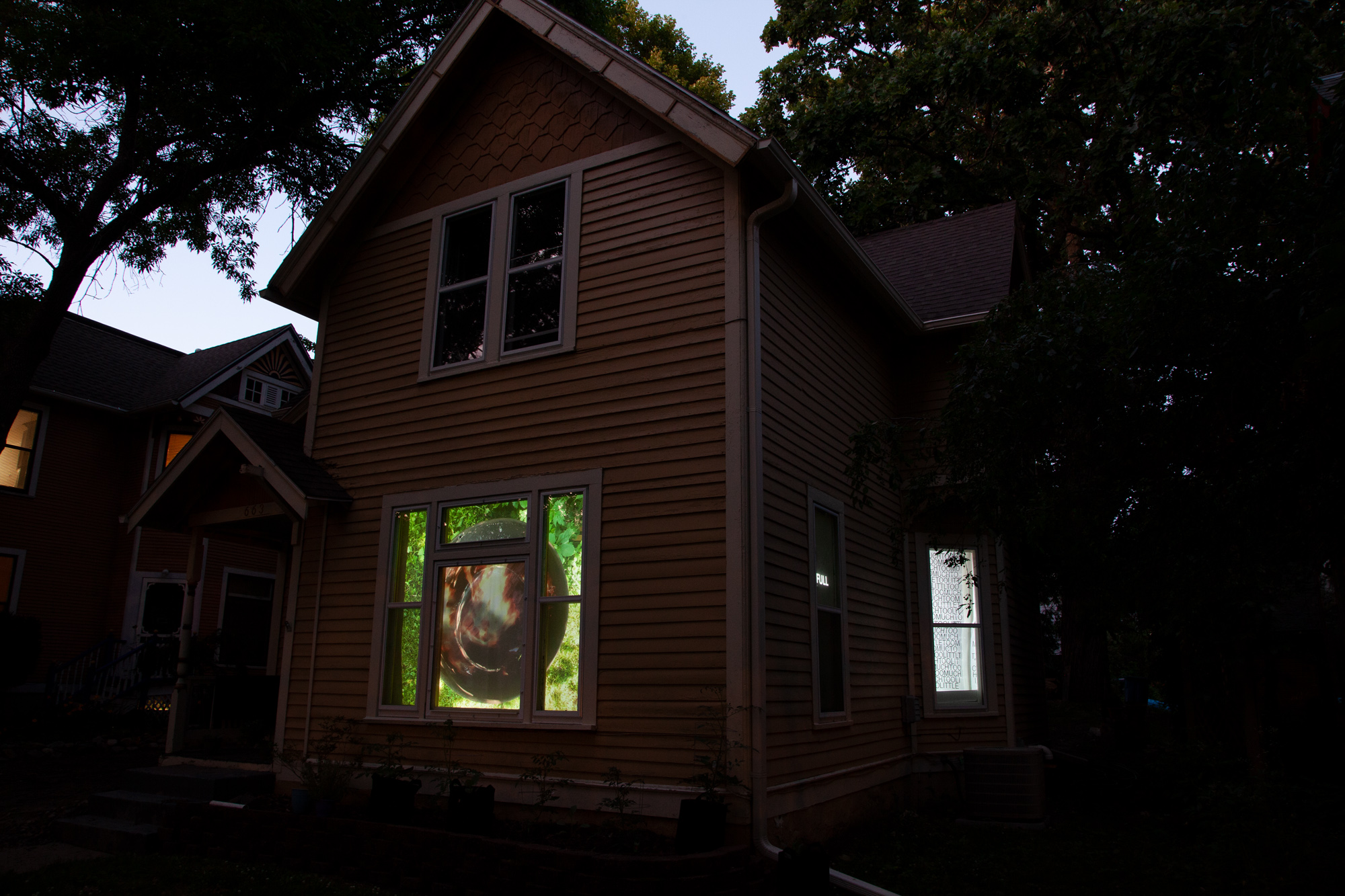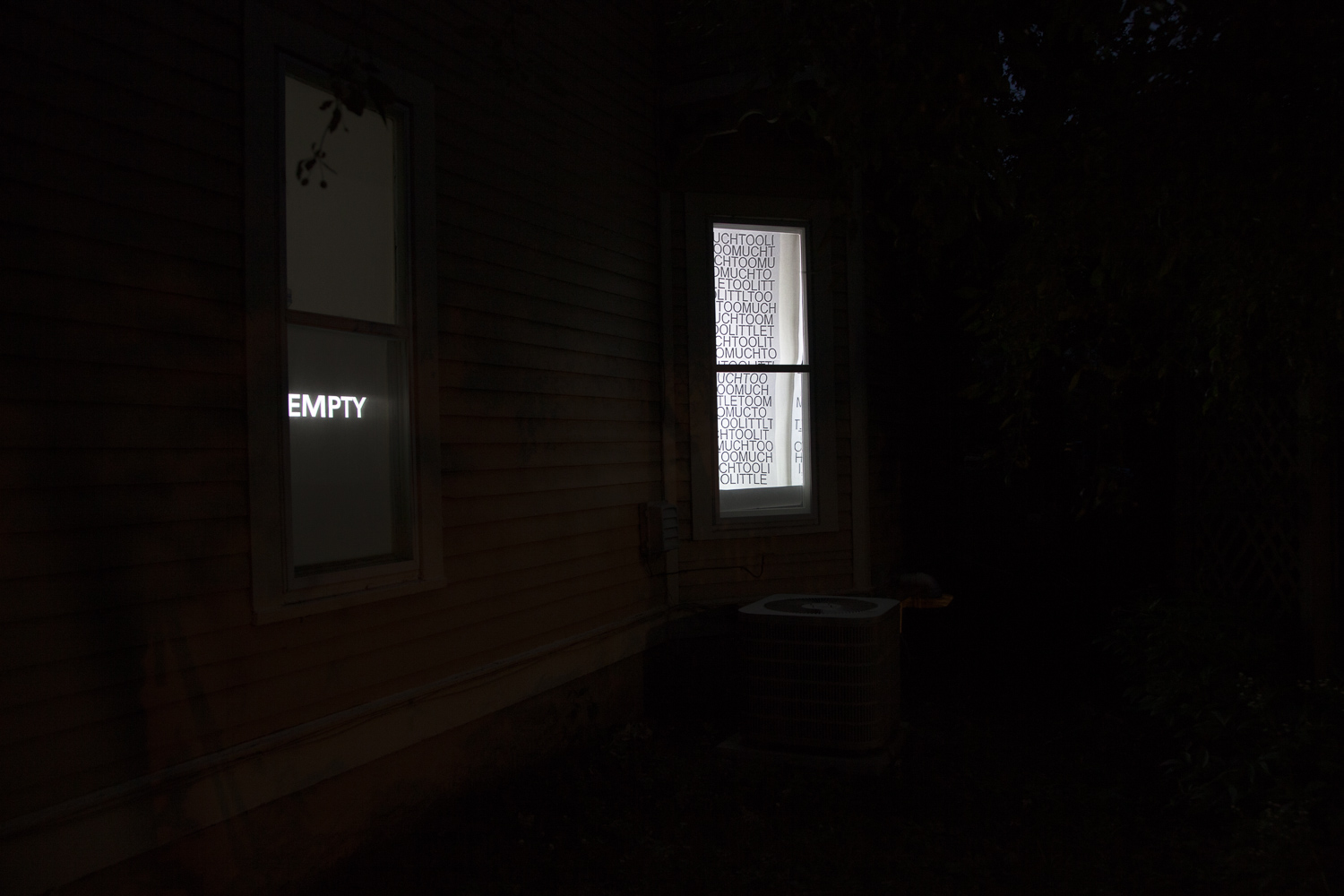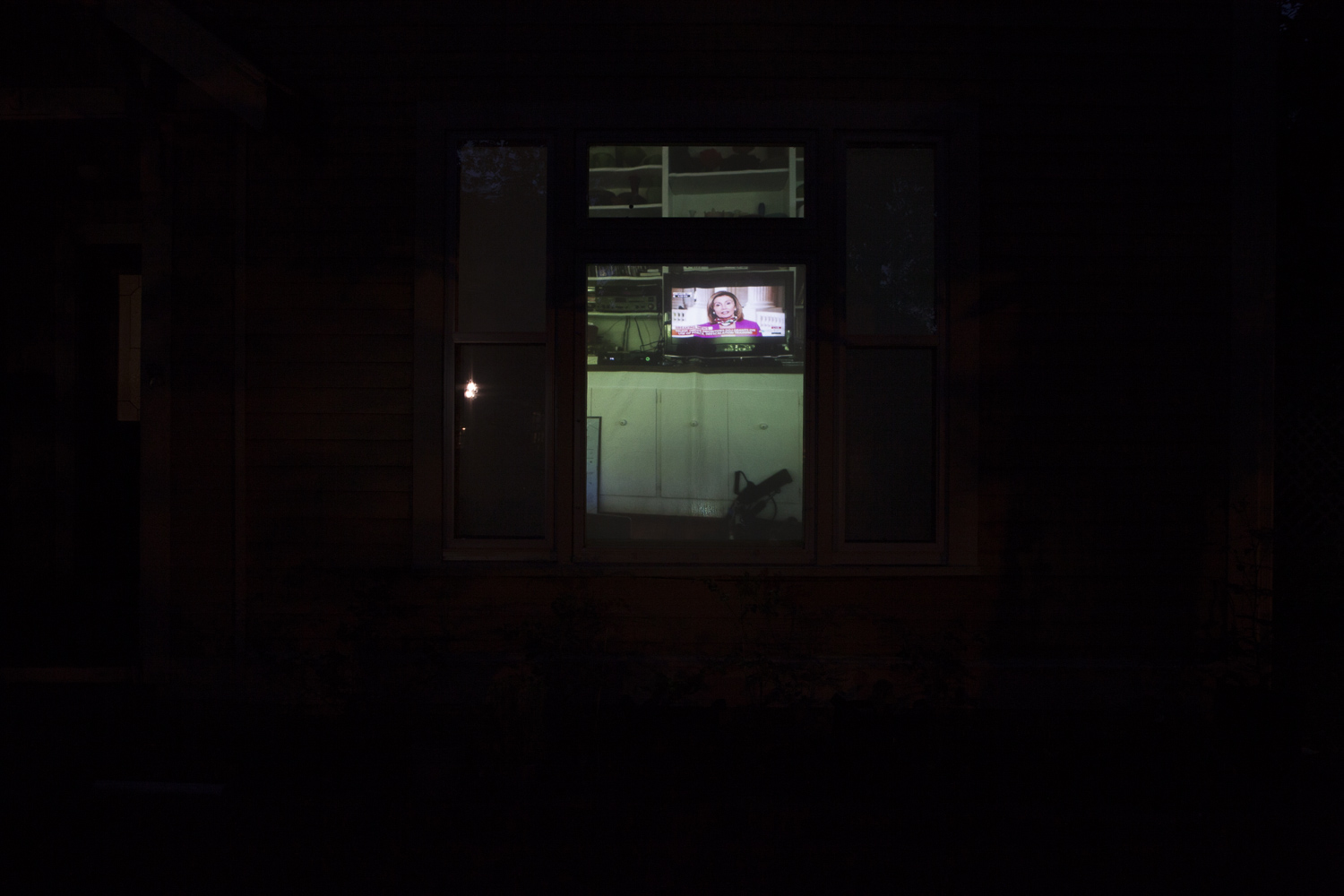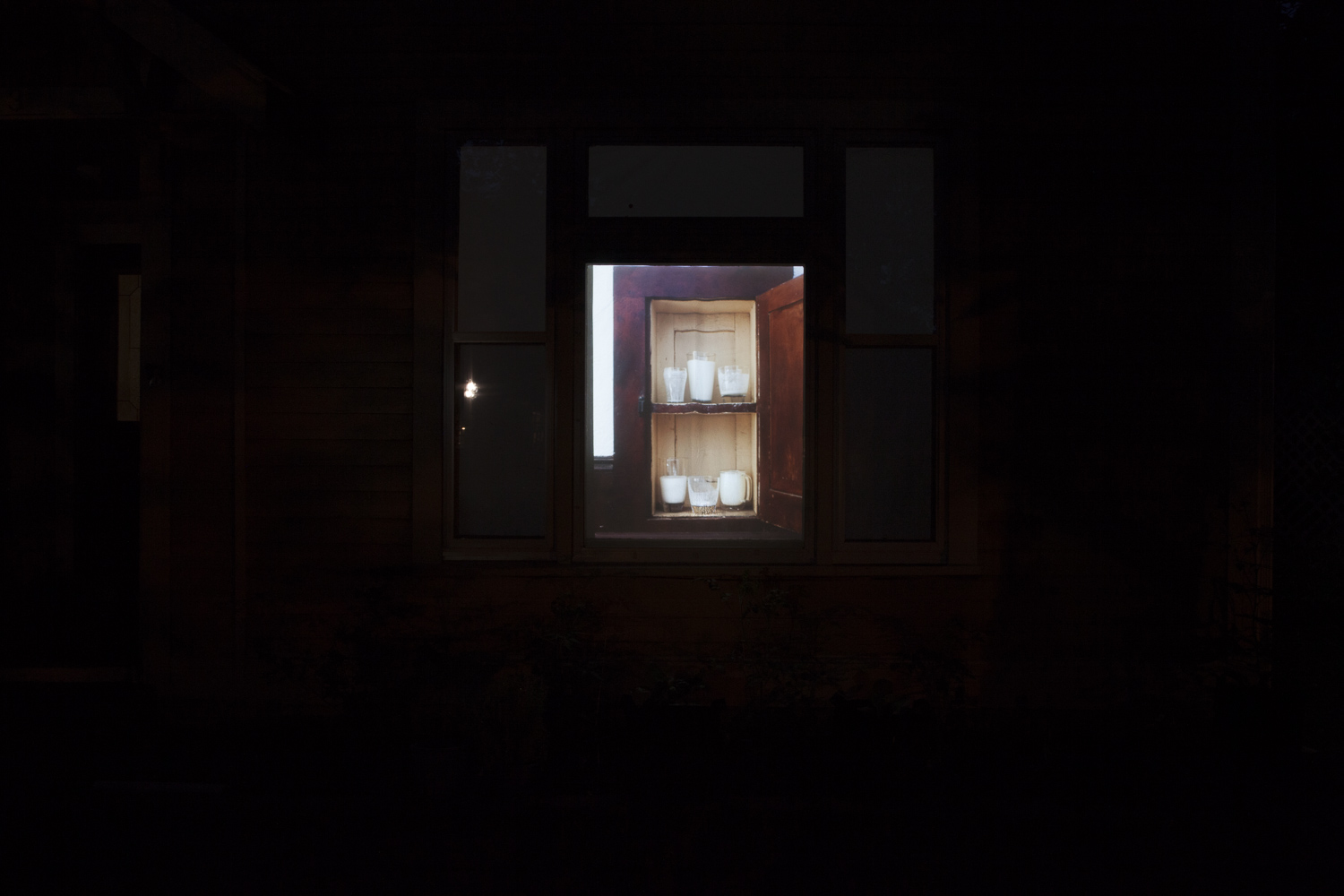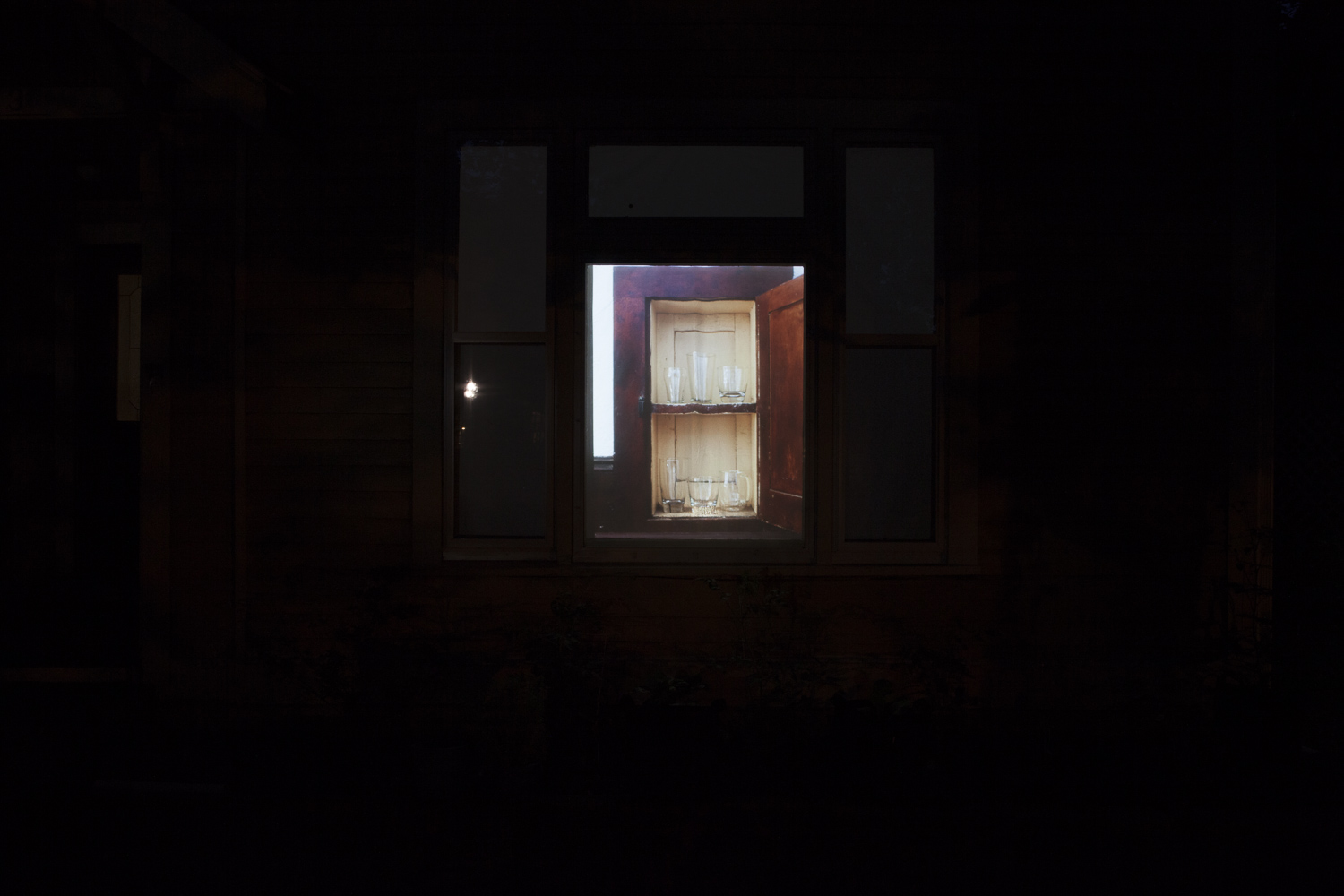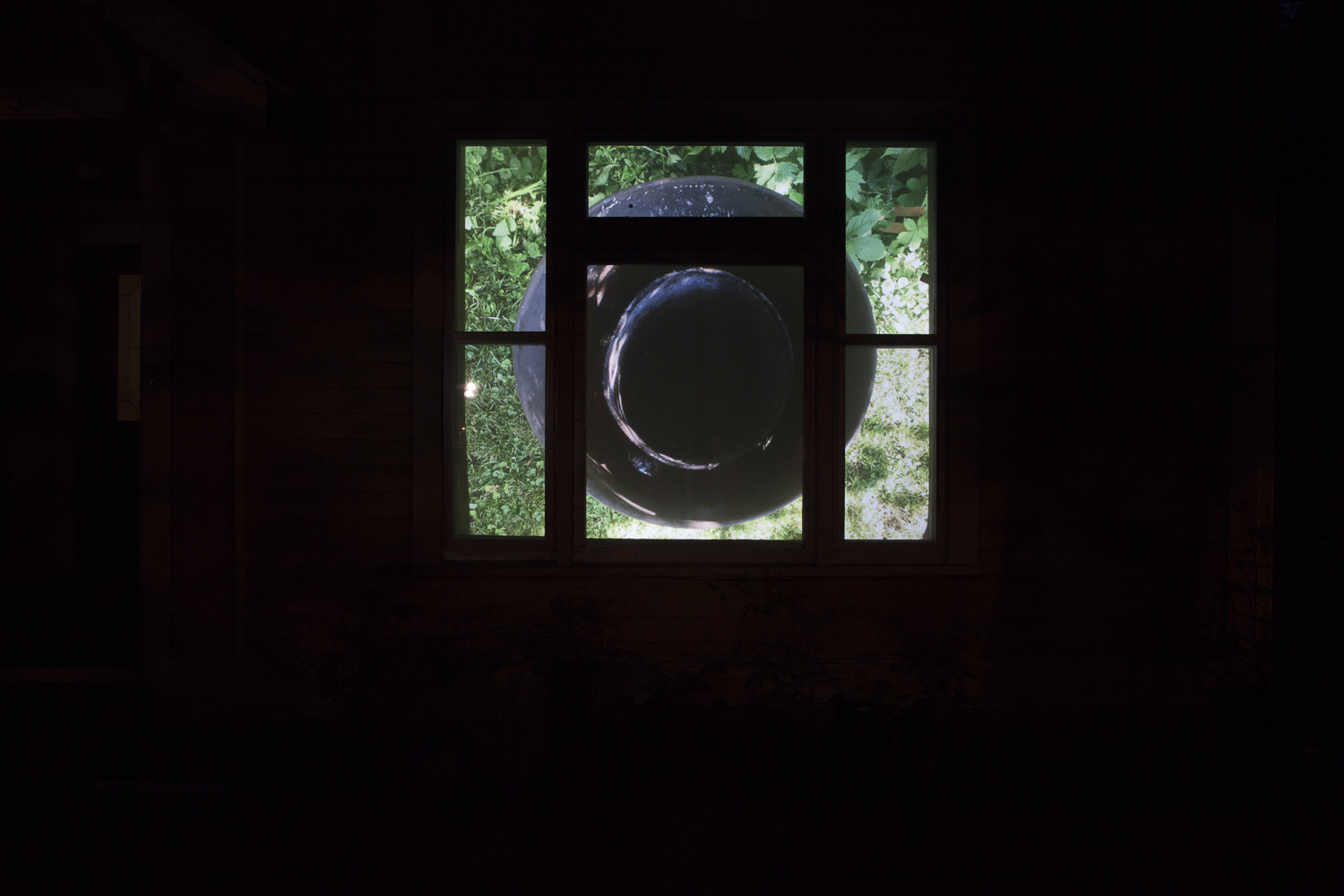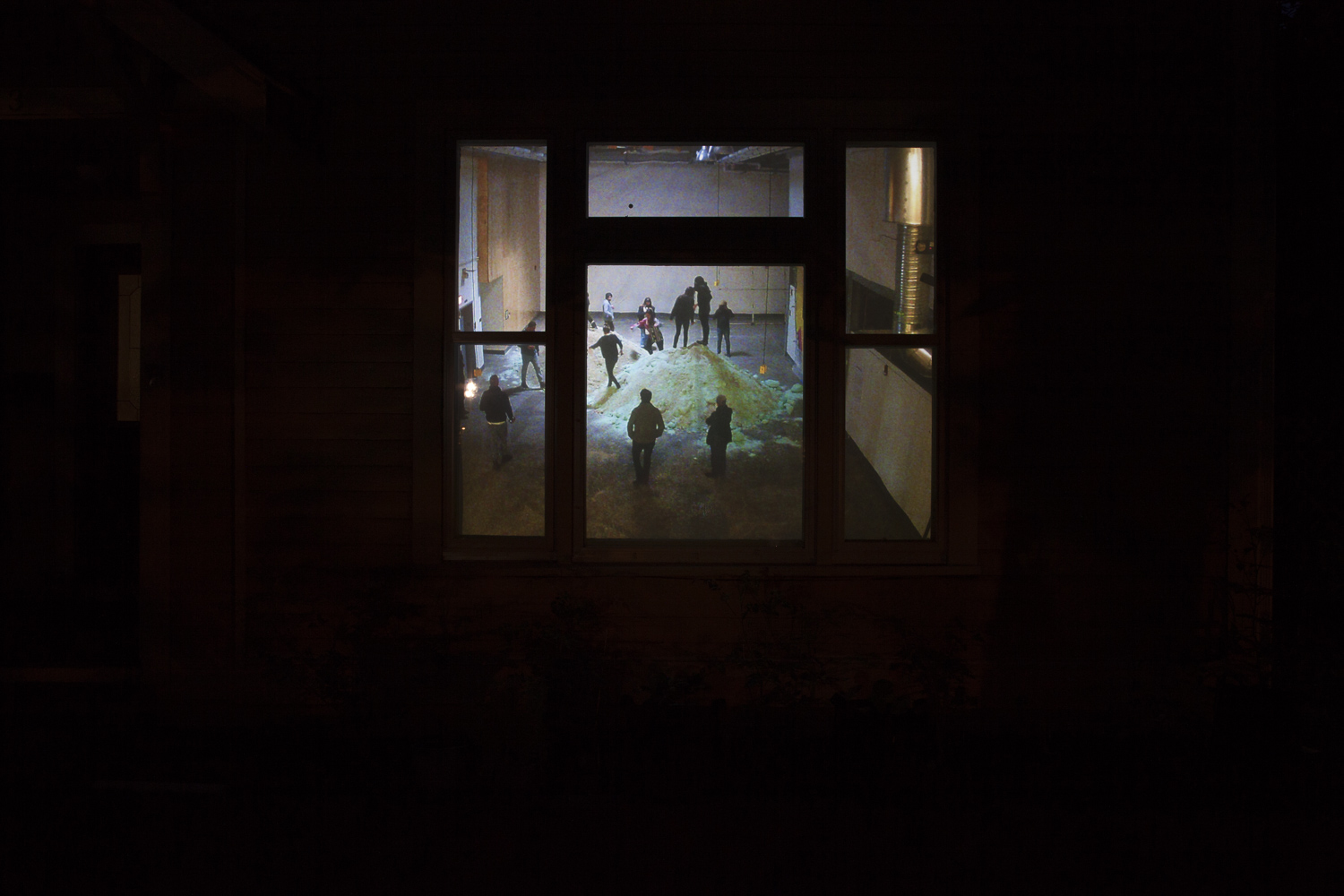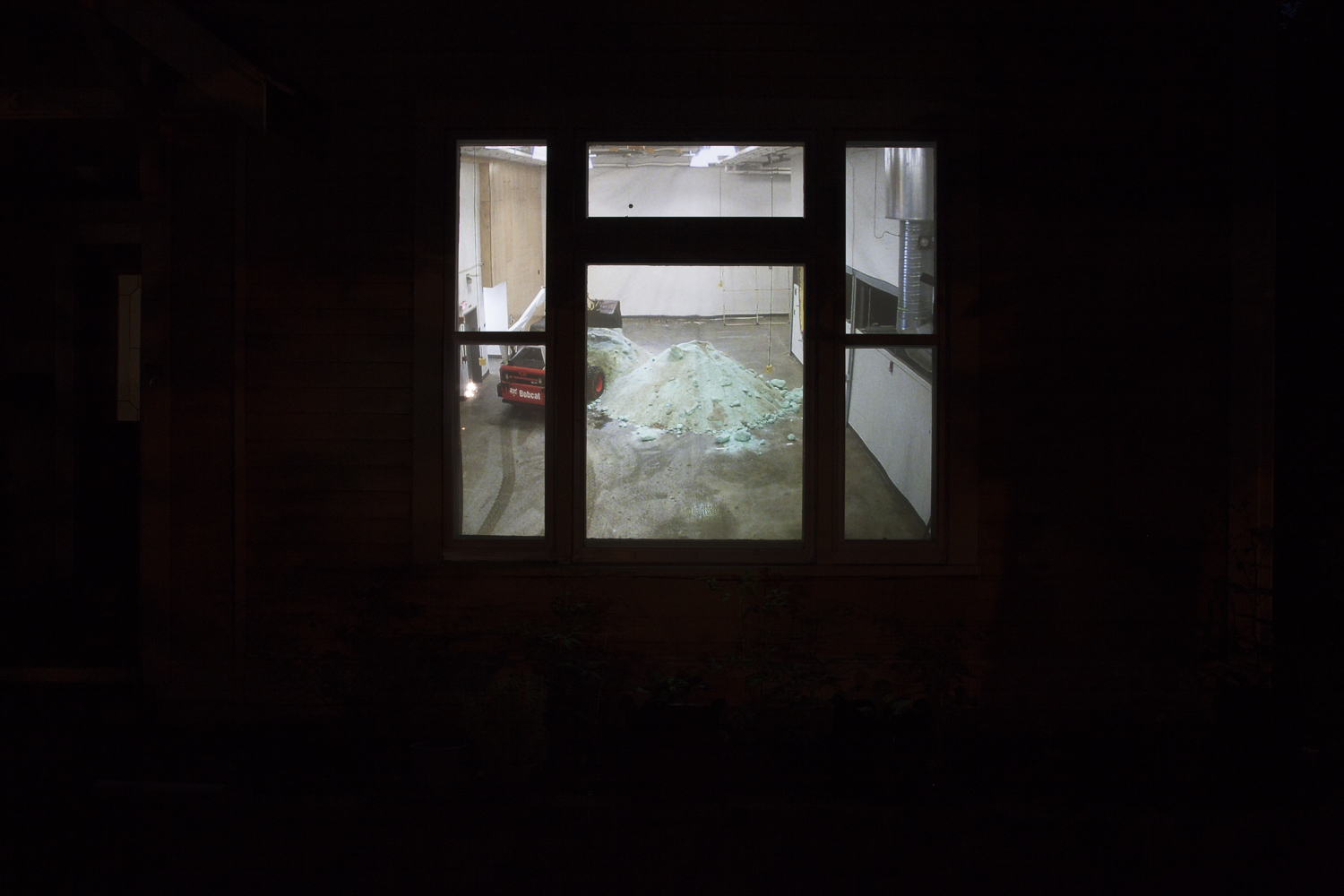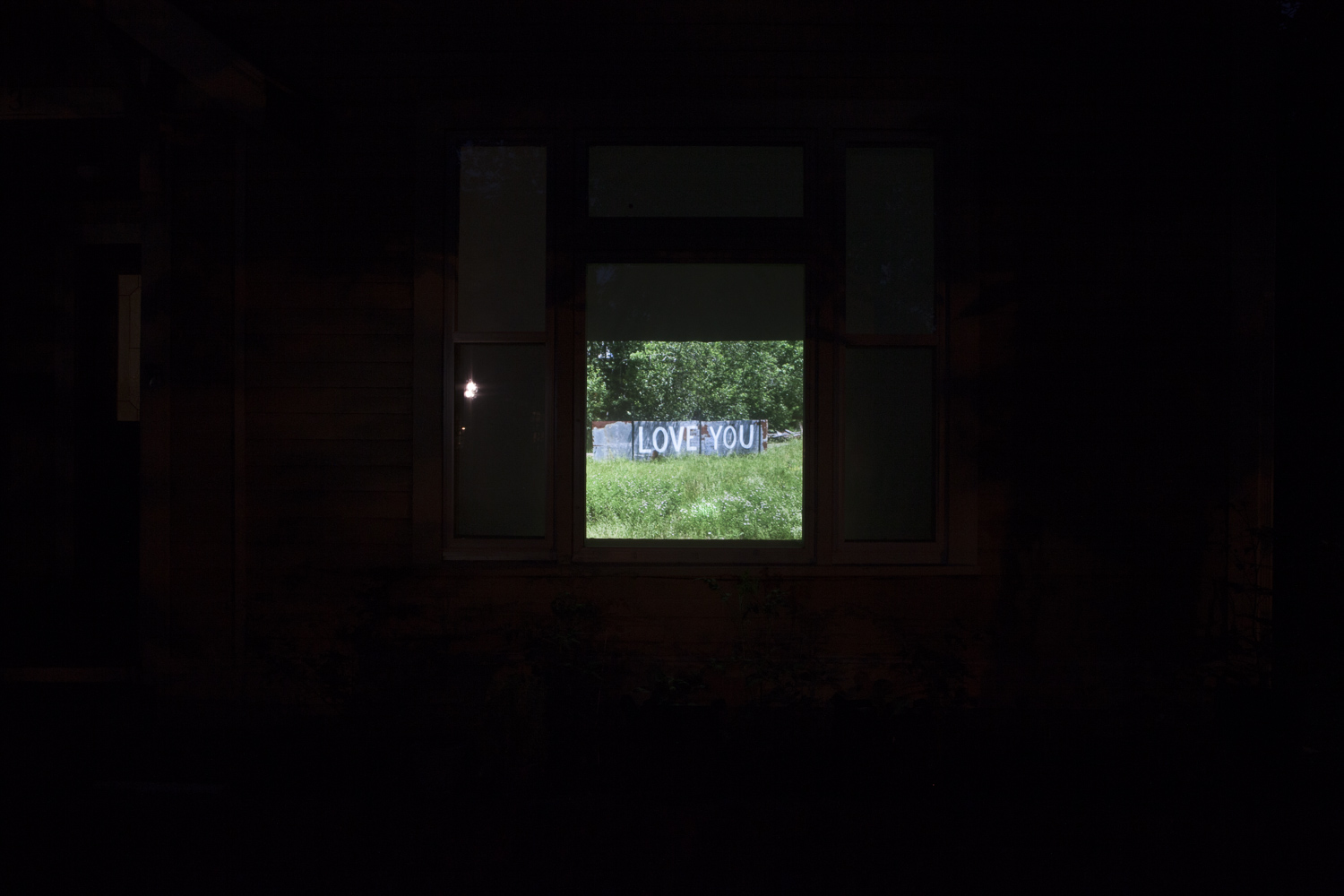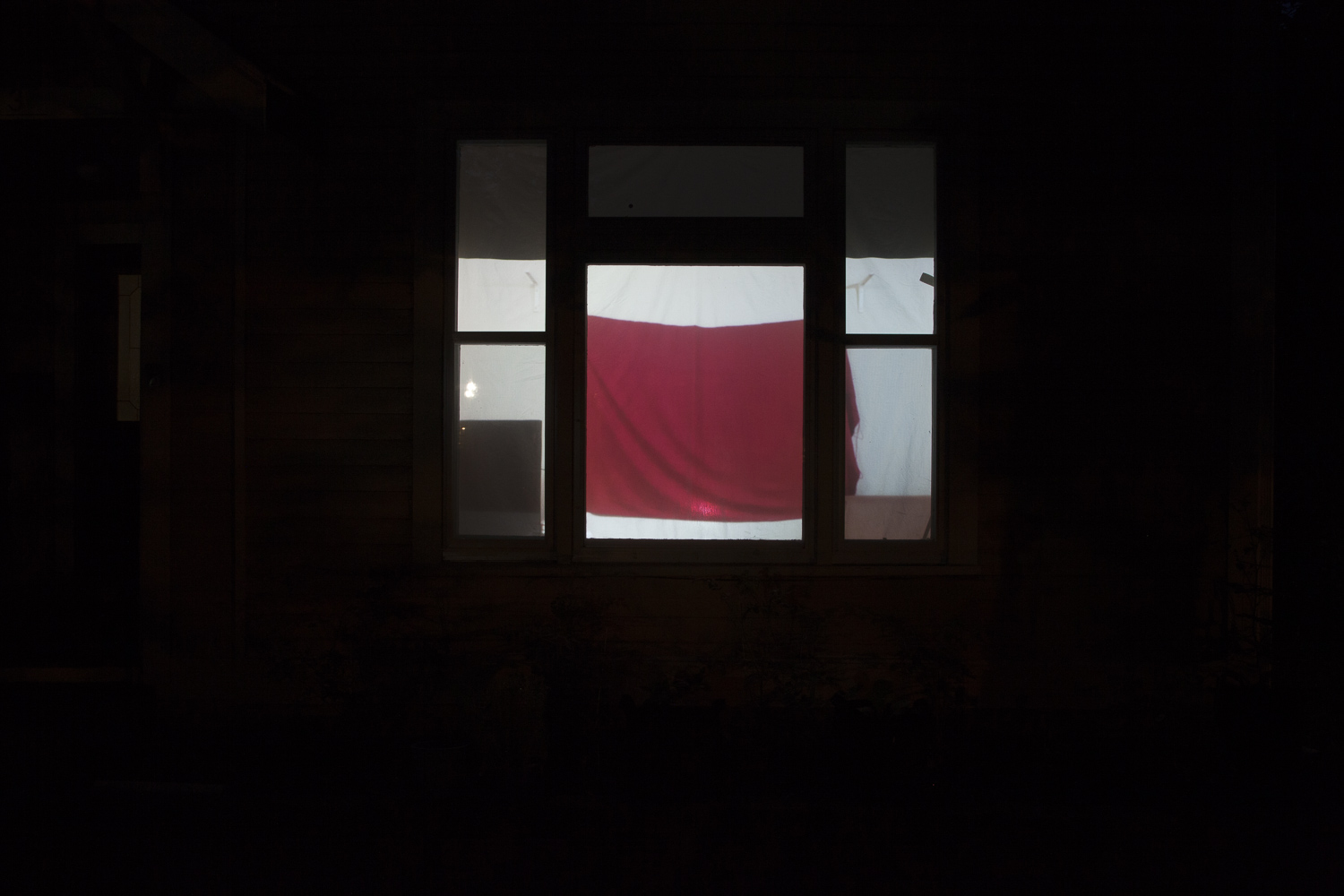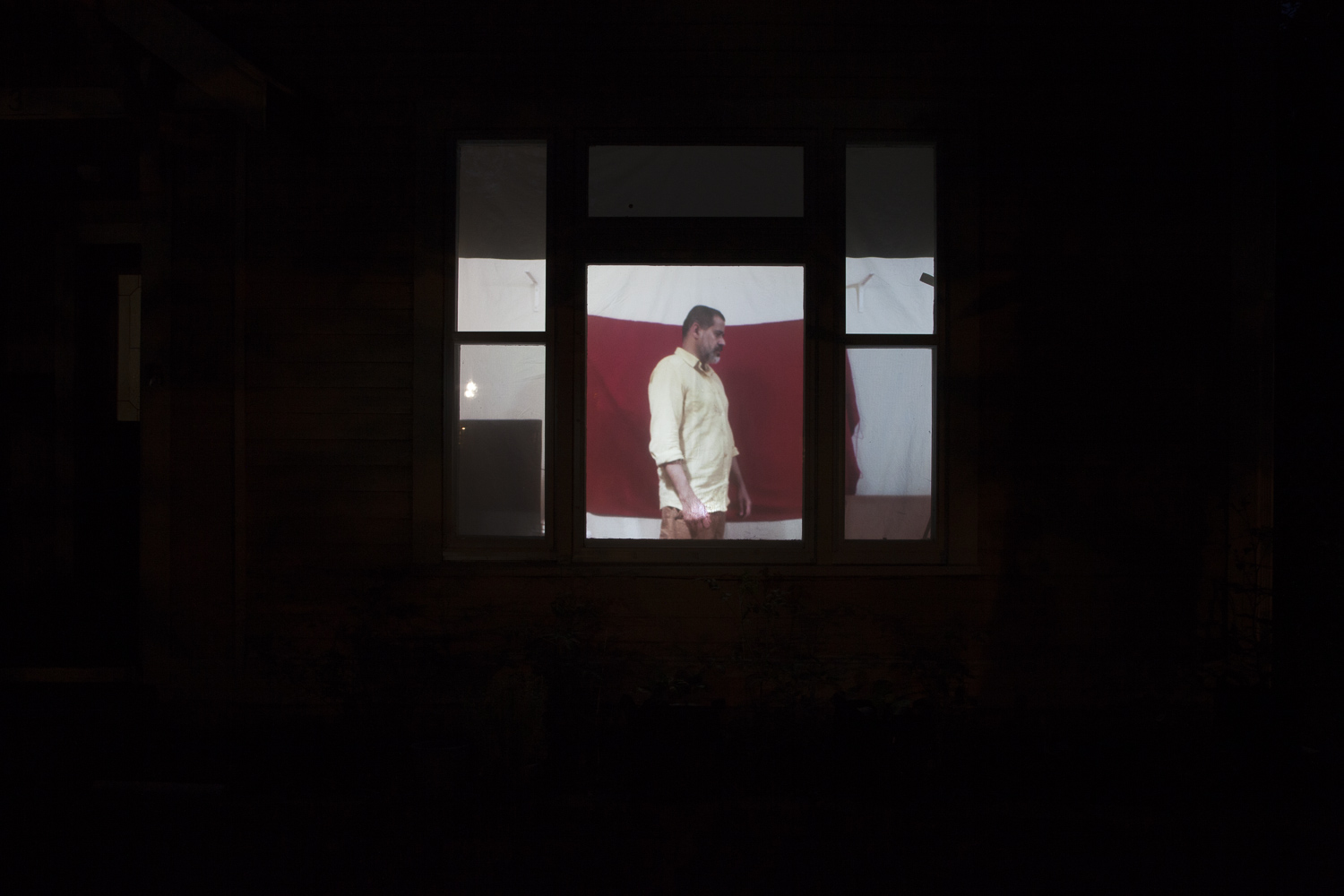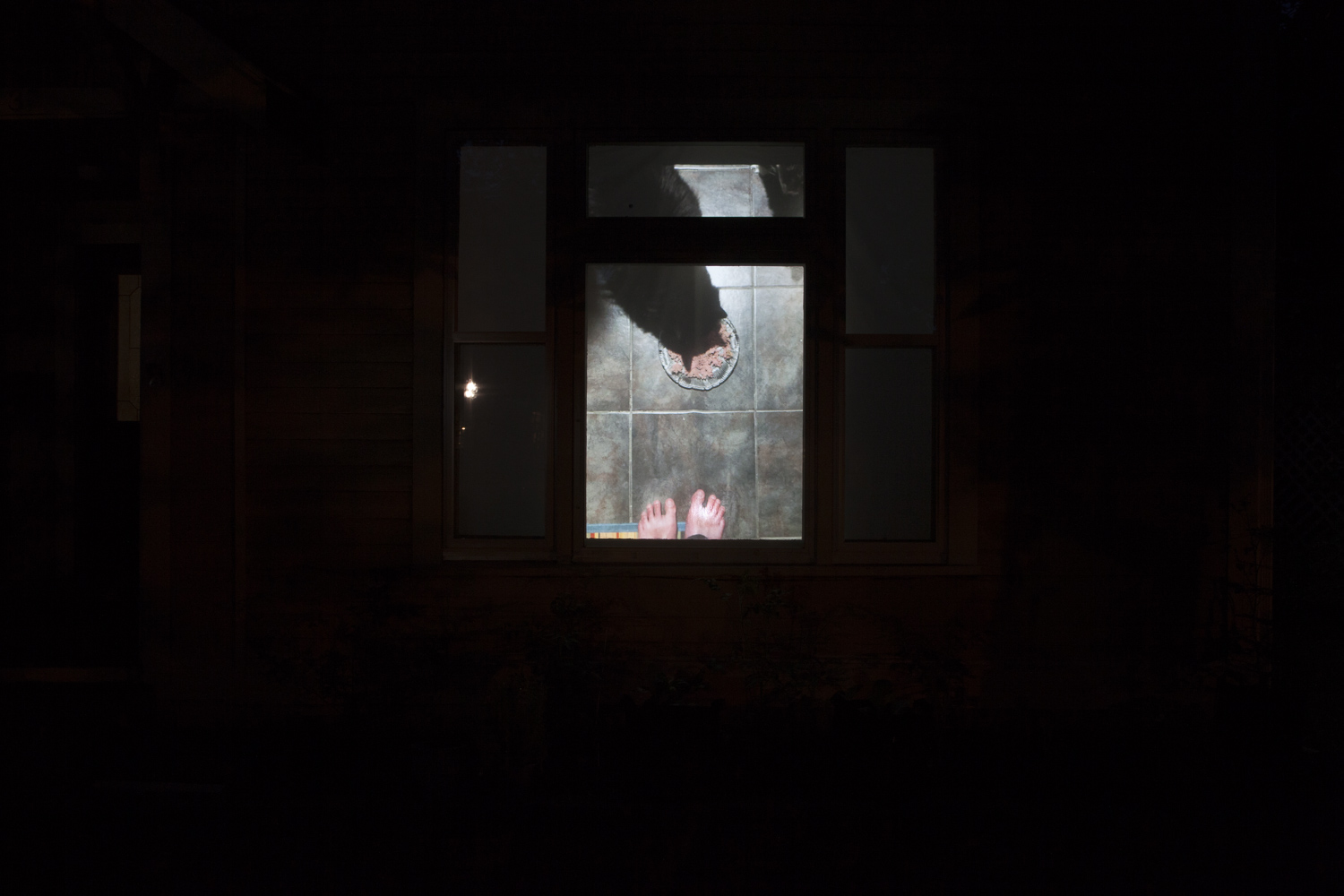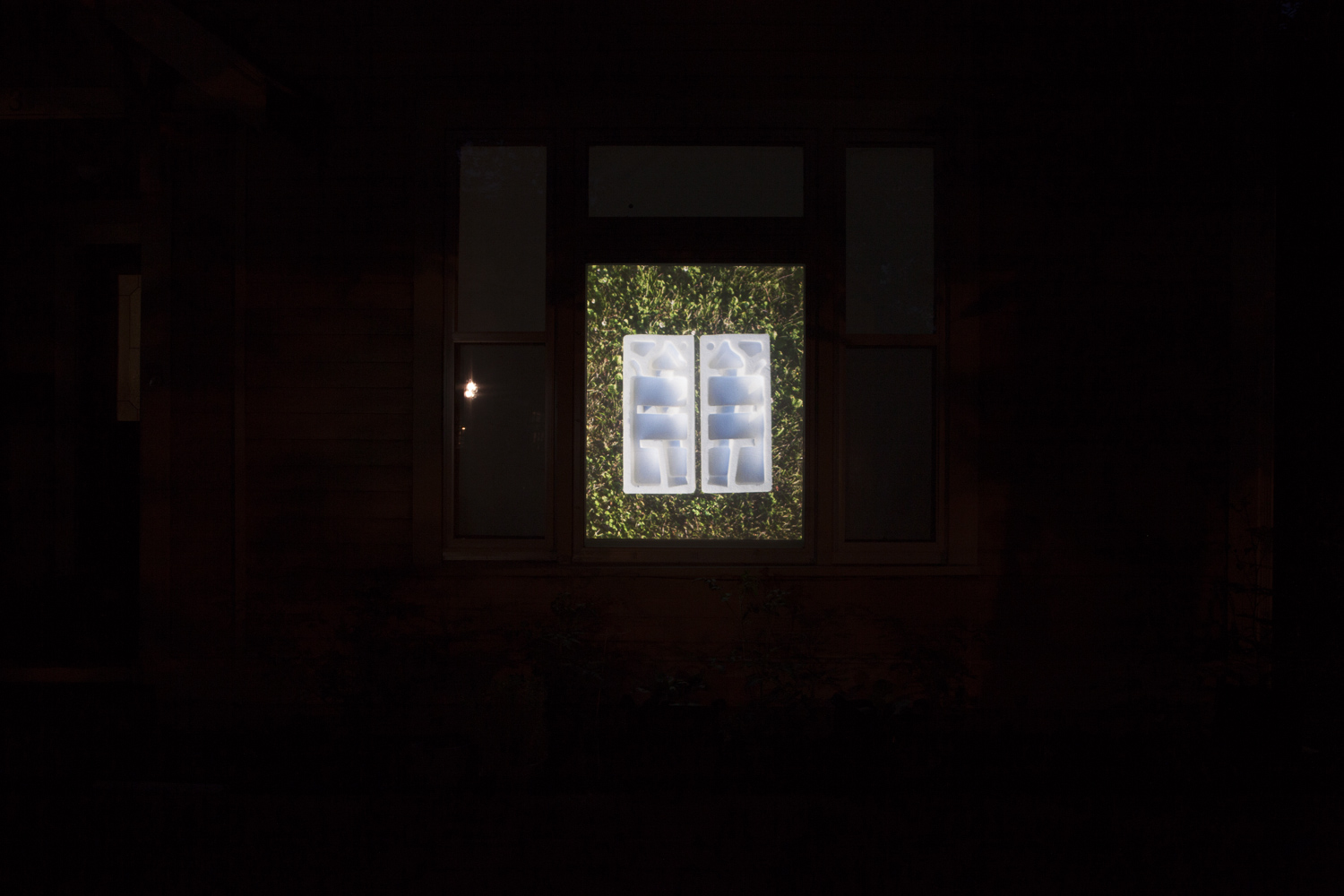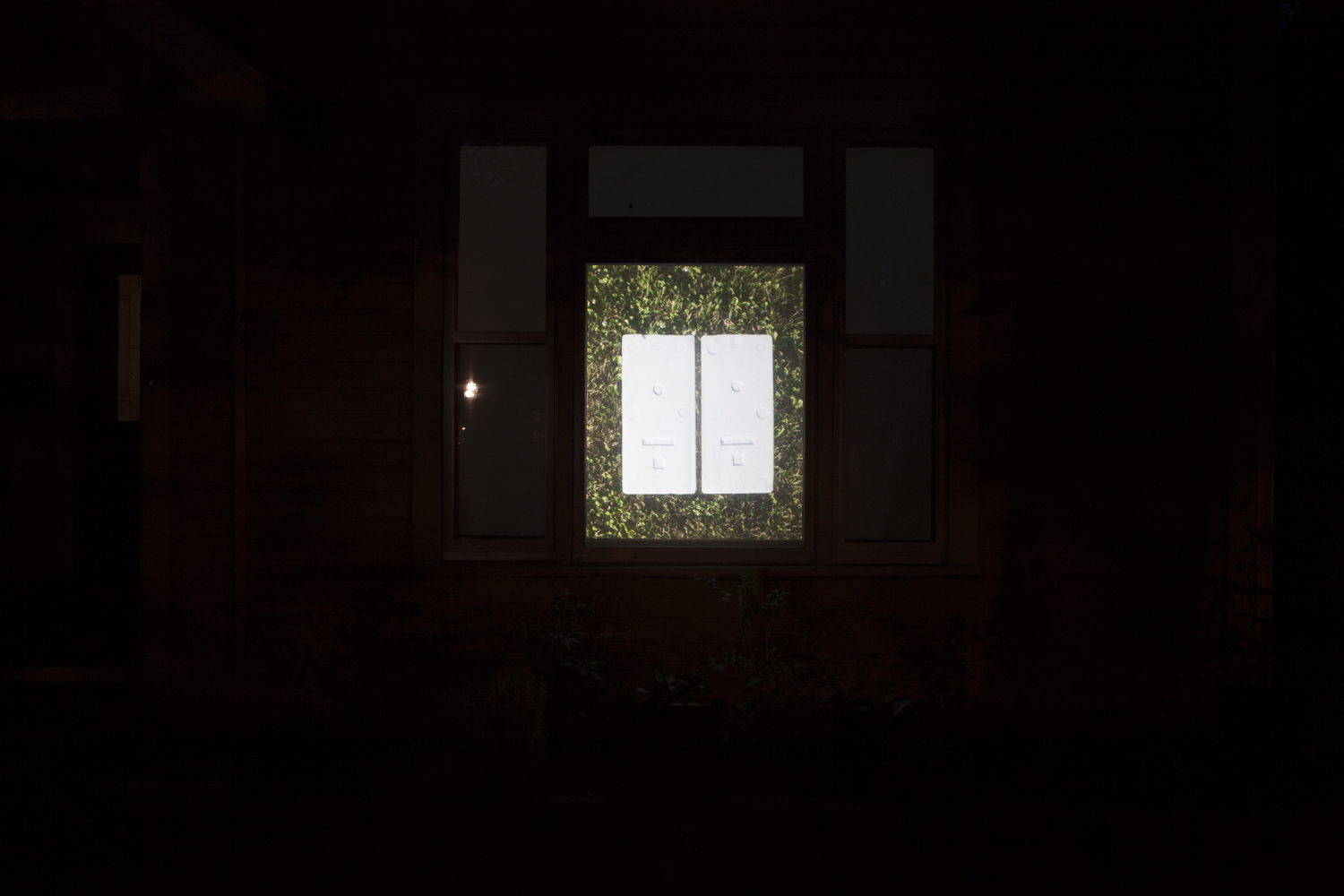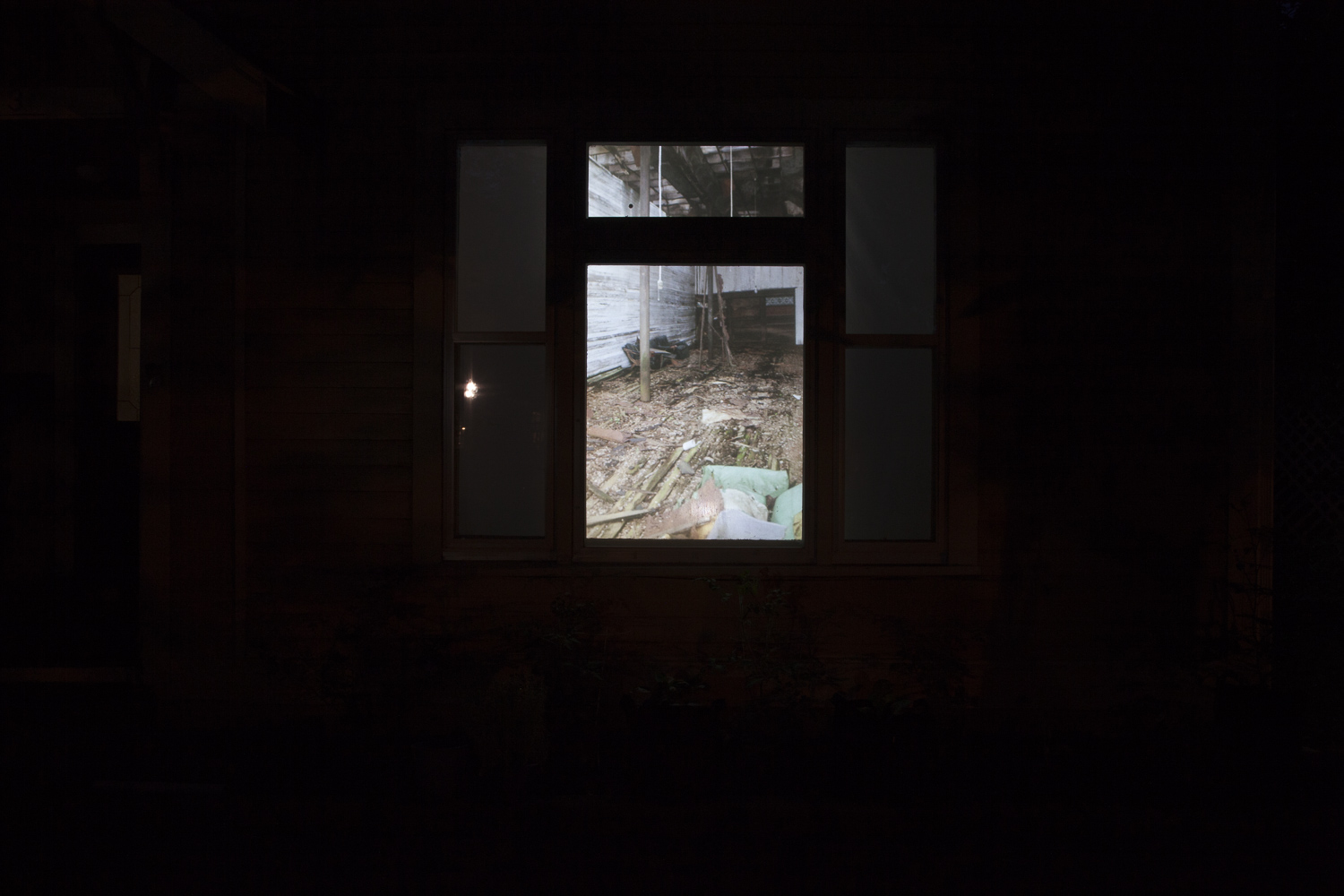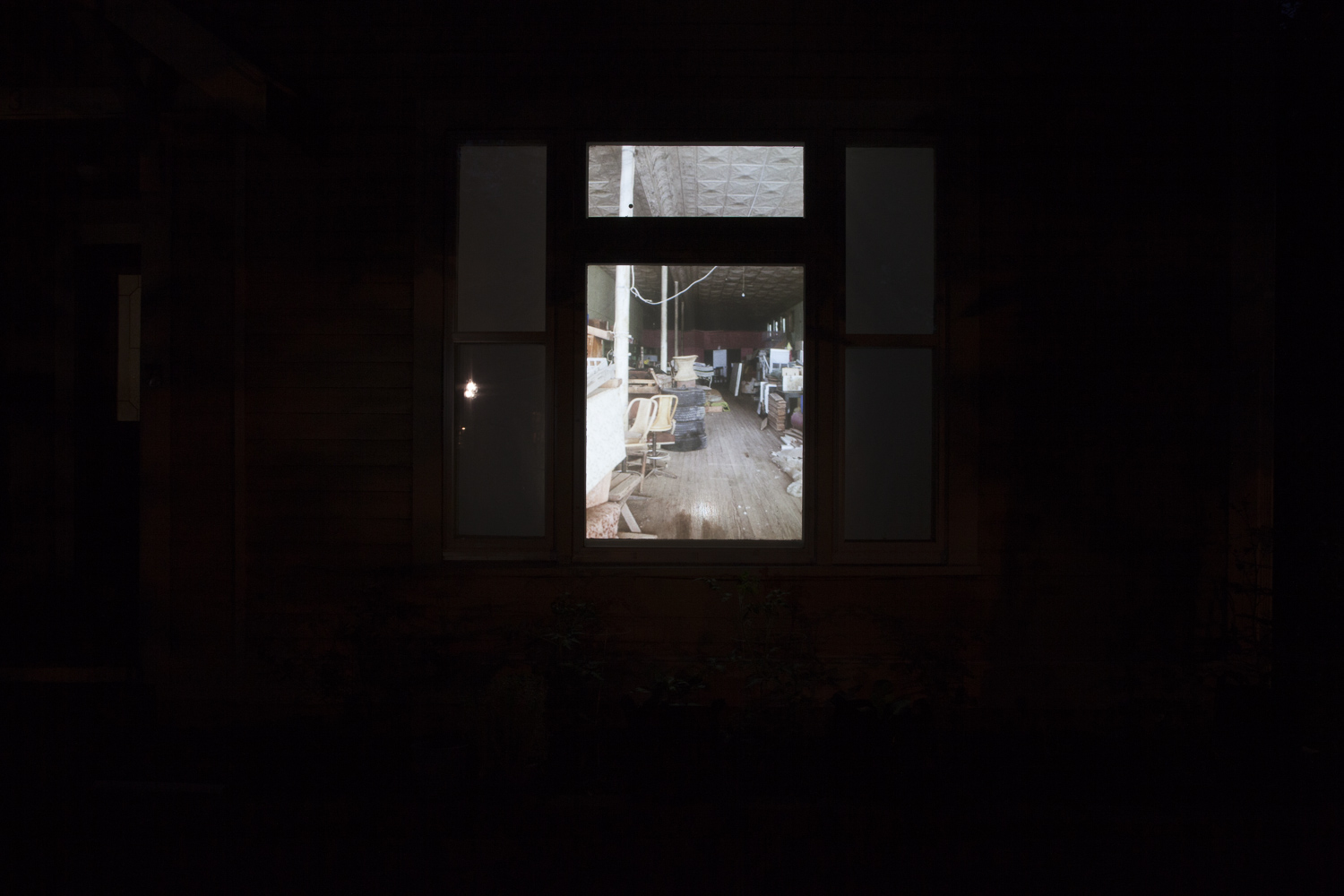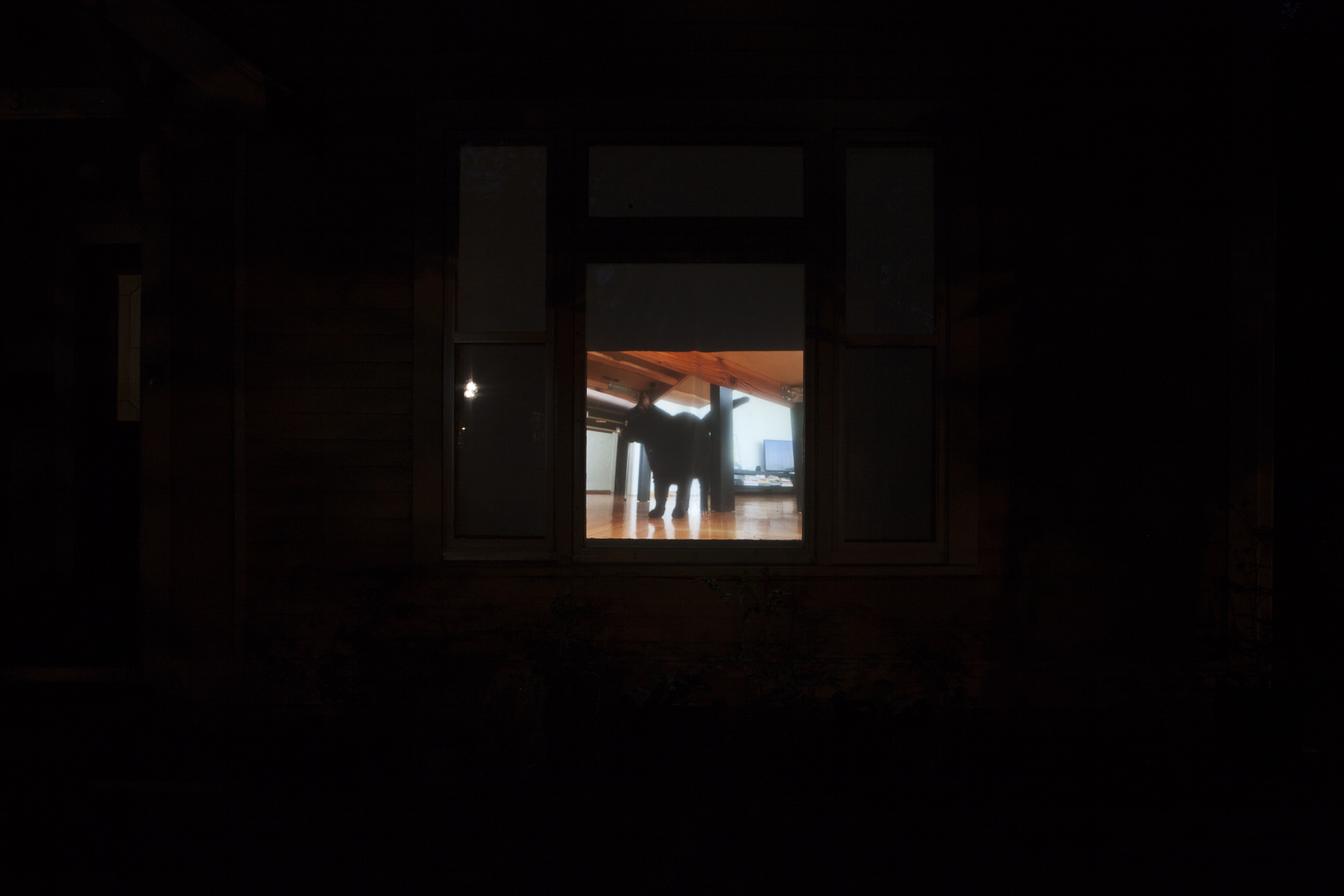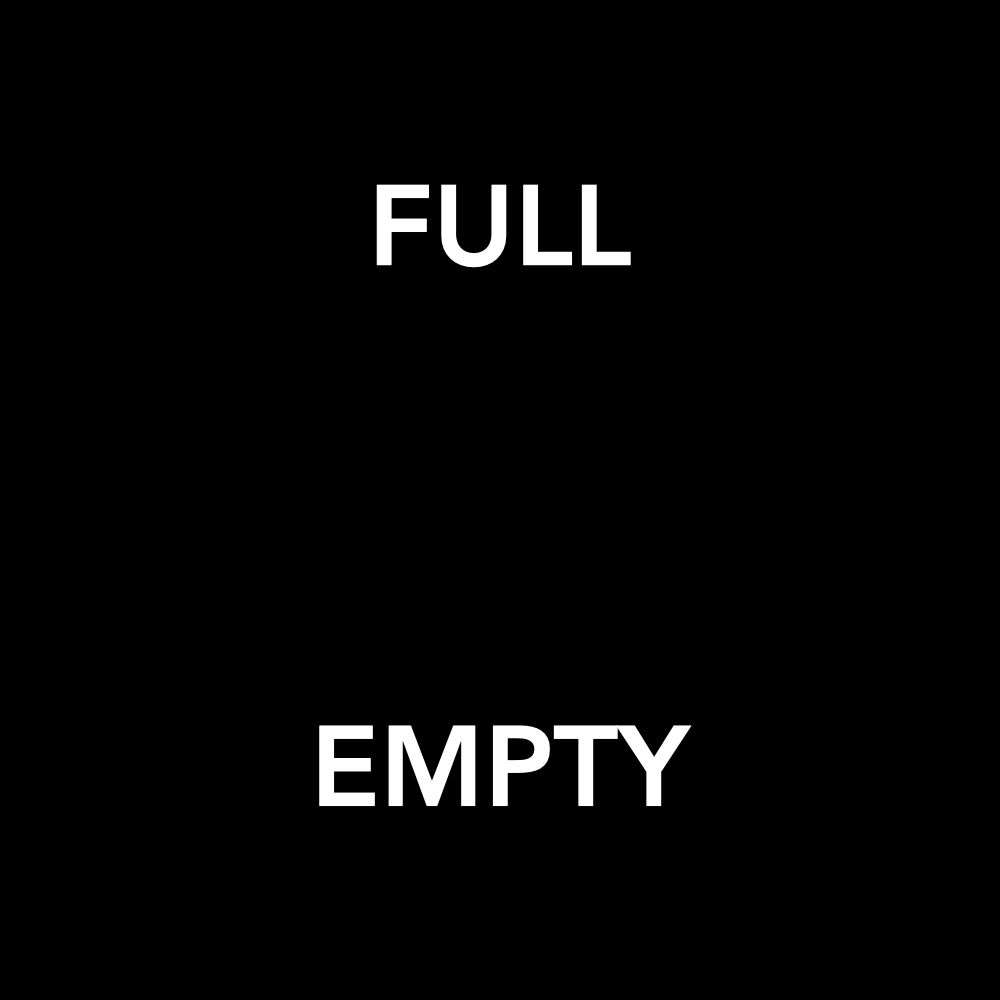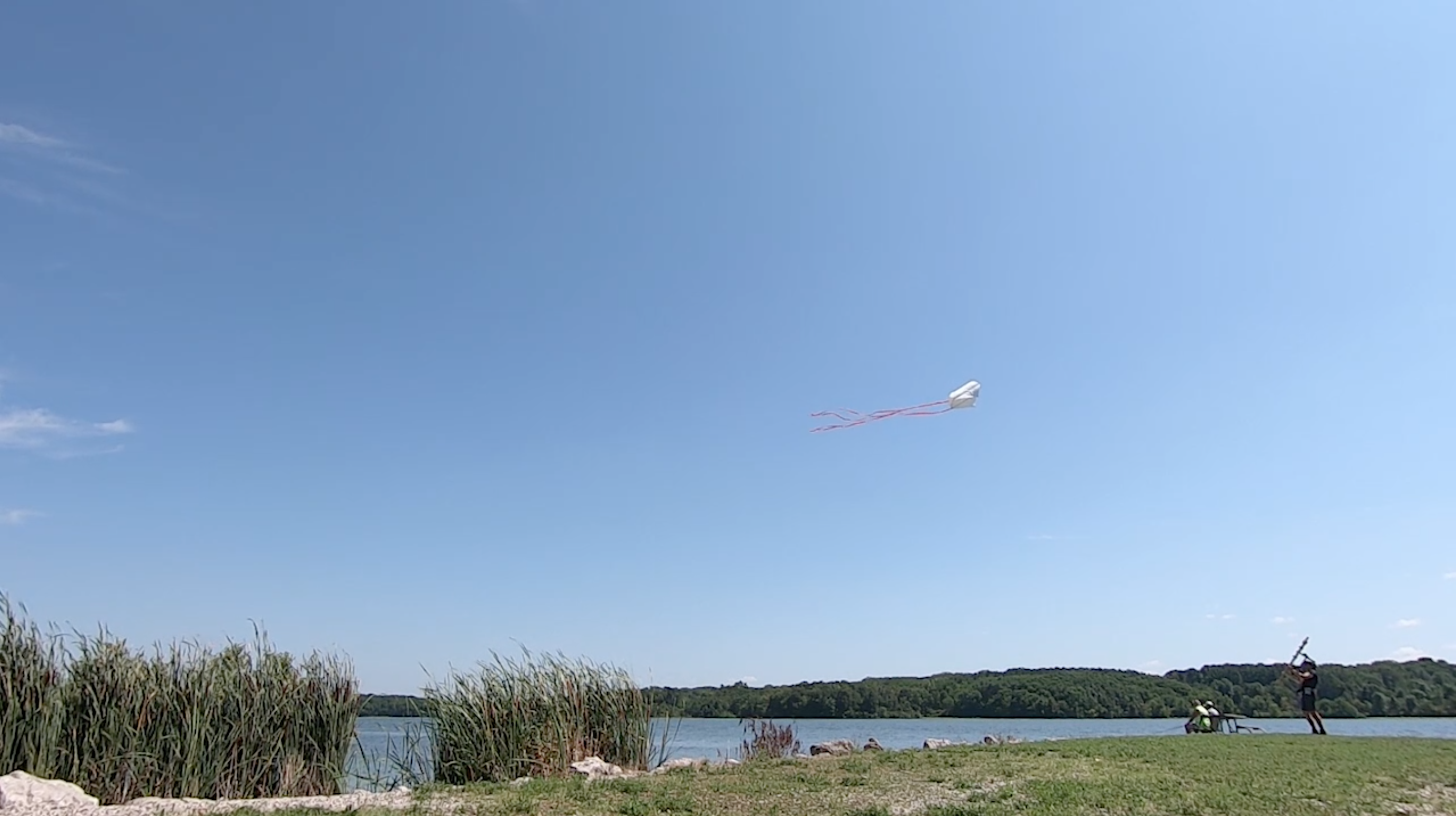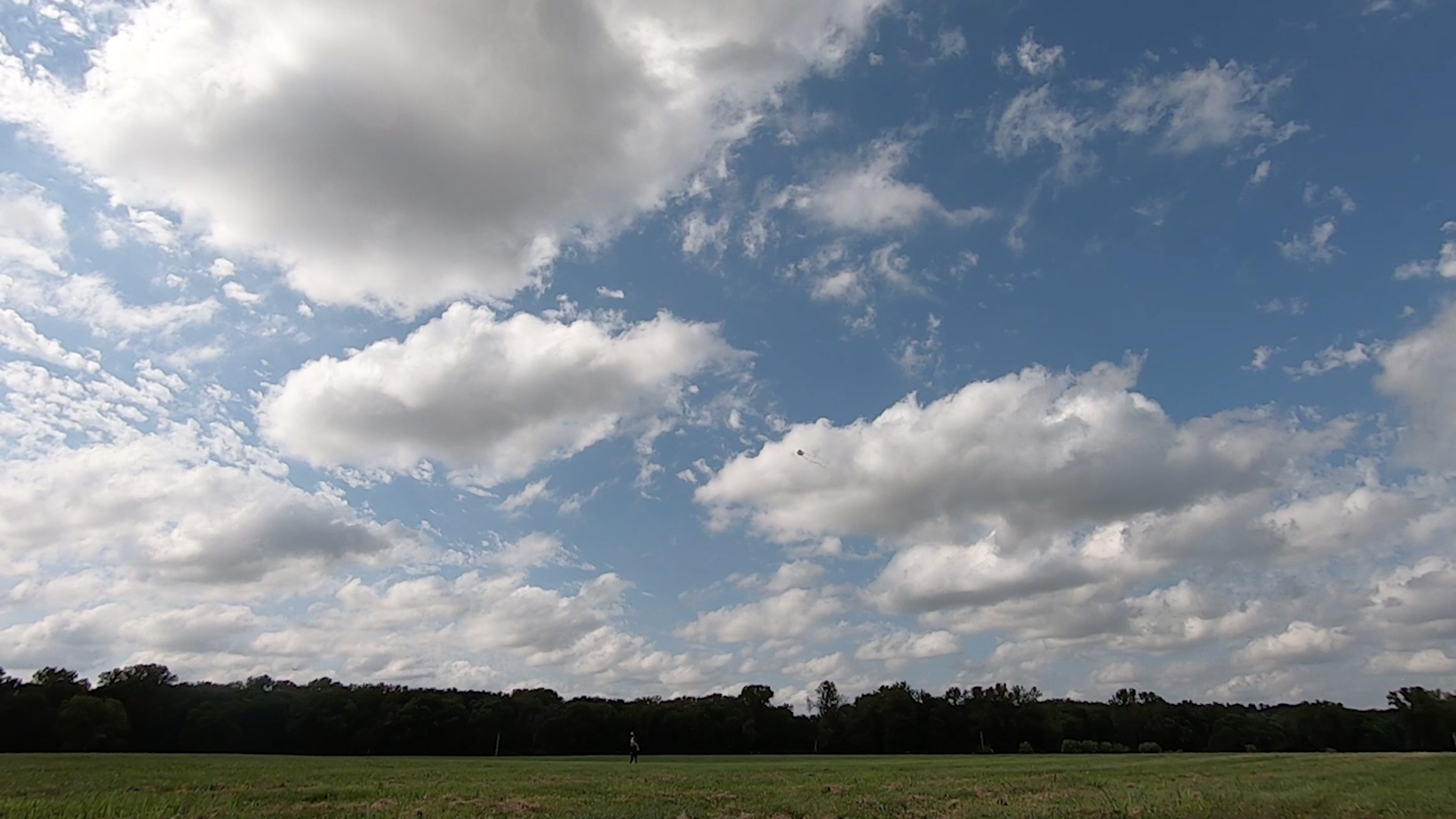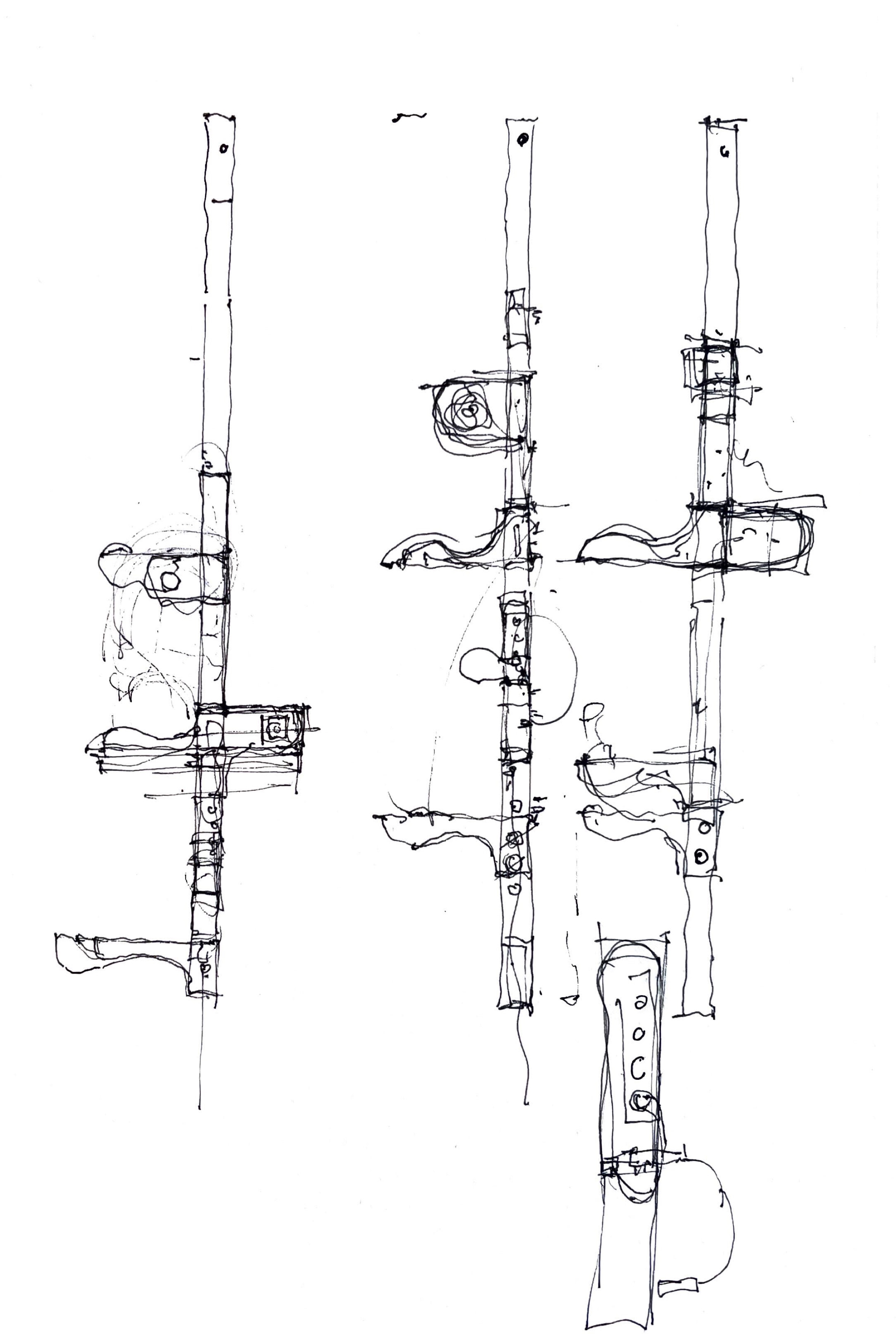
Field Harp (for 16 performers)
Field Harp was originally commissioned by the Des Moines Art Center in 2023, as part of the 75 Years of Iowa Art exhibition celebrating the anniversary of the center’s founding. Out of four performances scheduled, three were realized and one had to be canceled due to inclement weather. Each performance was with a different set of 16 volunteer harpists.
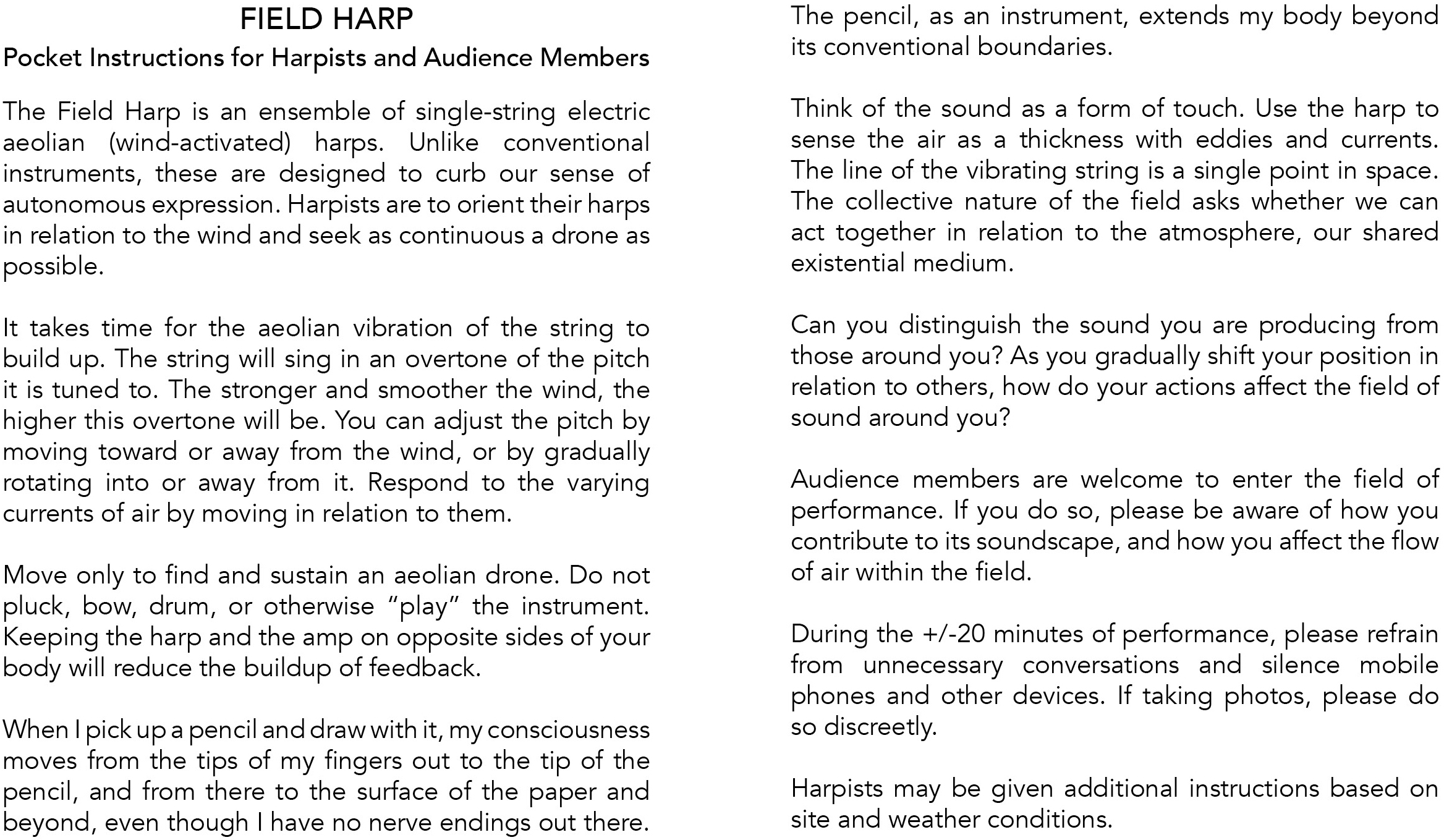
Instructions for Field Harp Public Rehearsals at the 2025 Chicago Architecture Biennial, Shift: Architecture in Times of Radical Change.




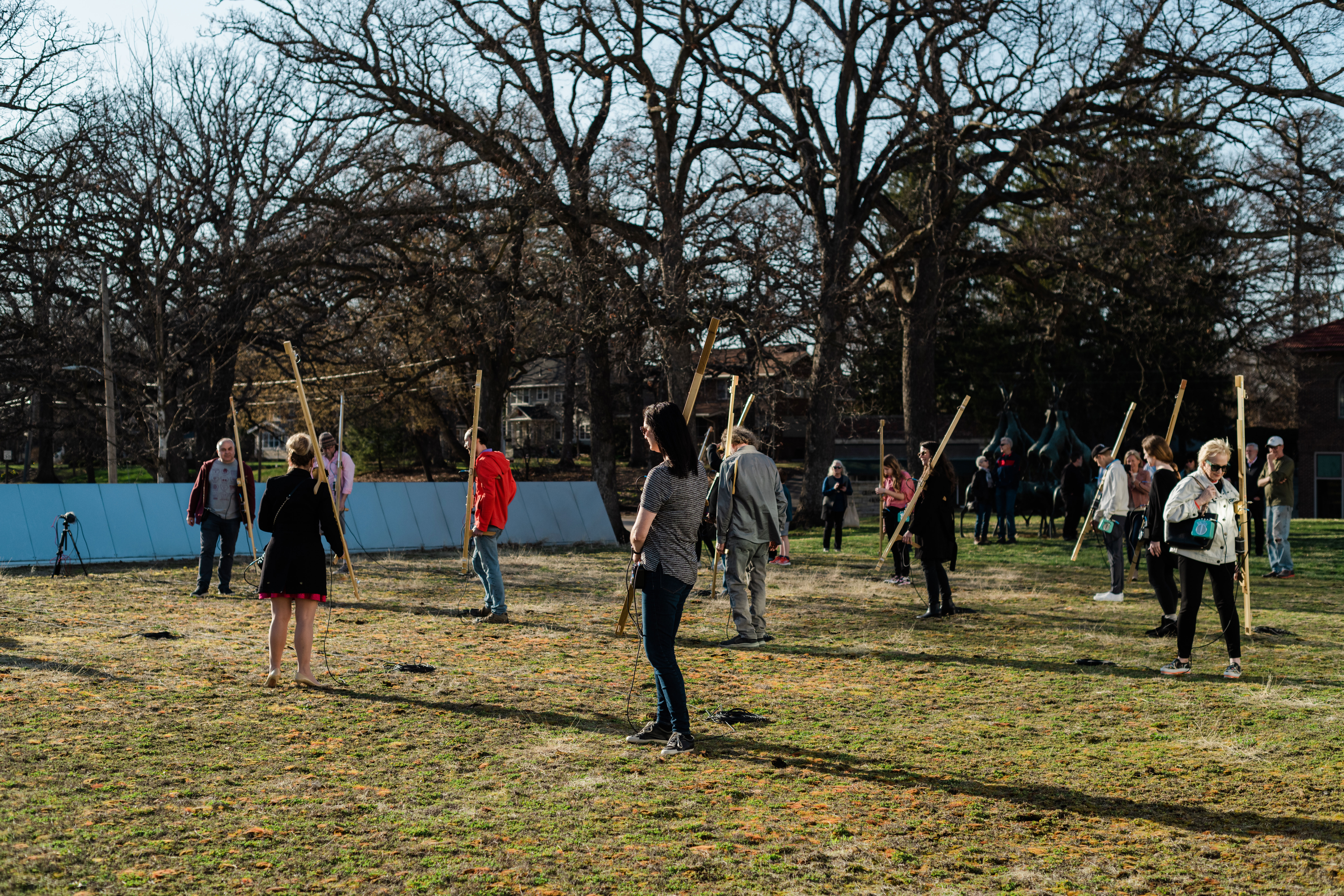

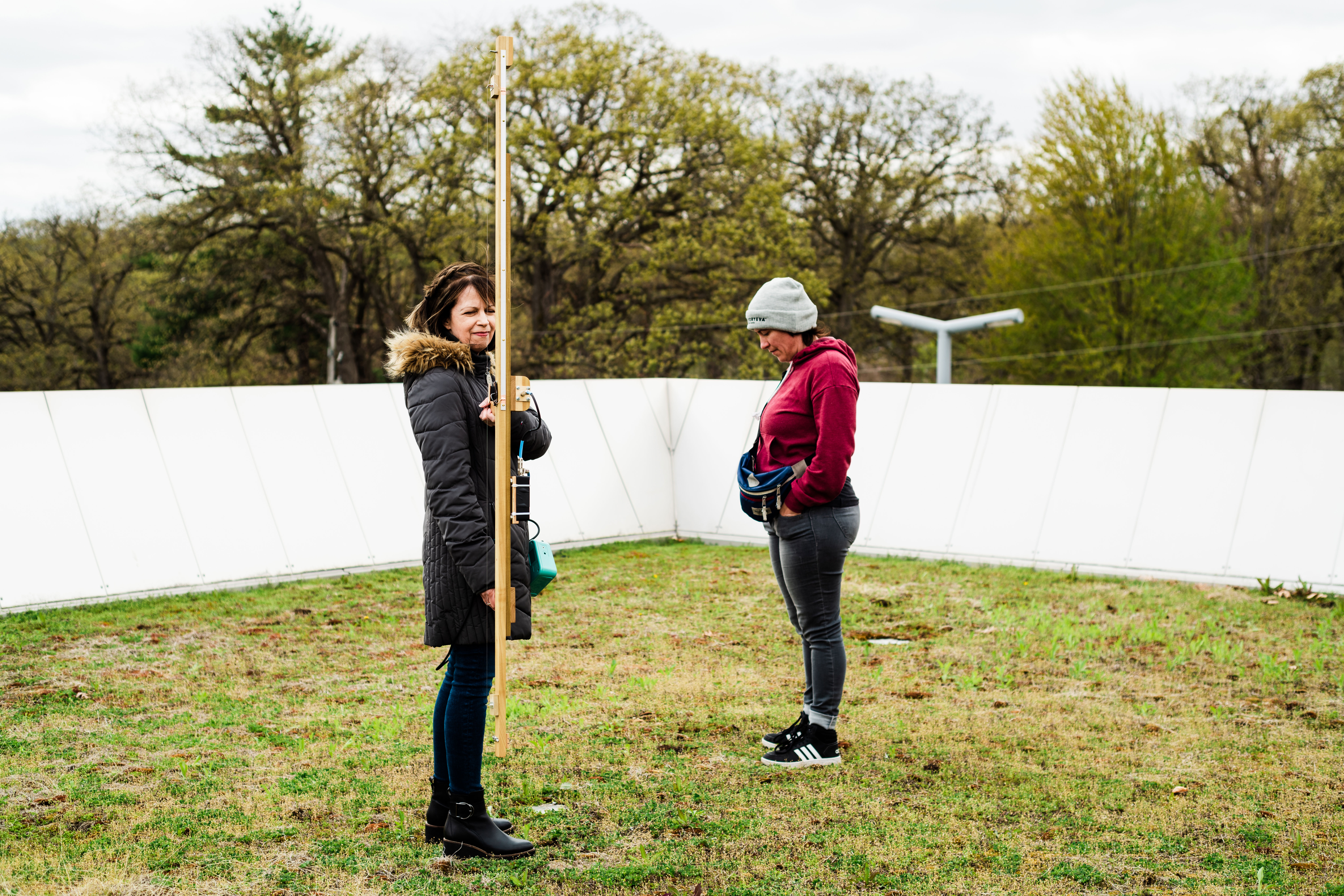
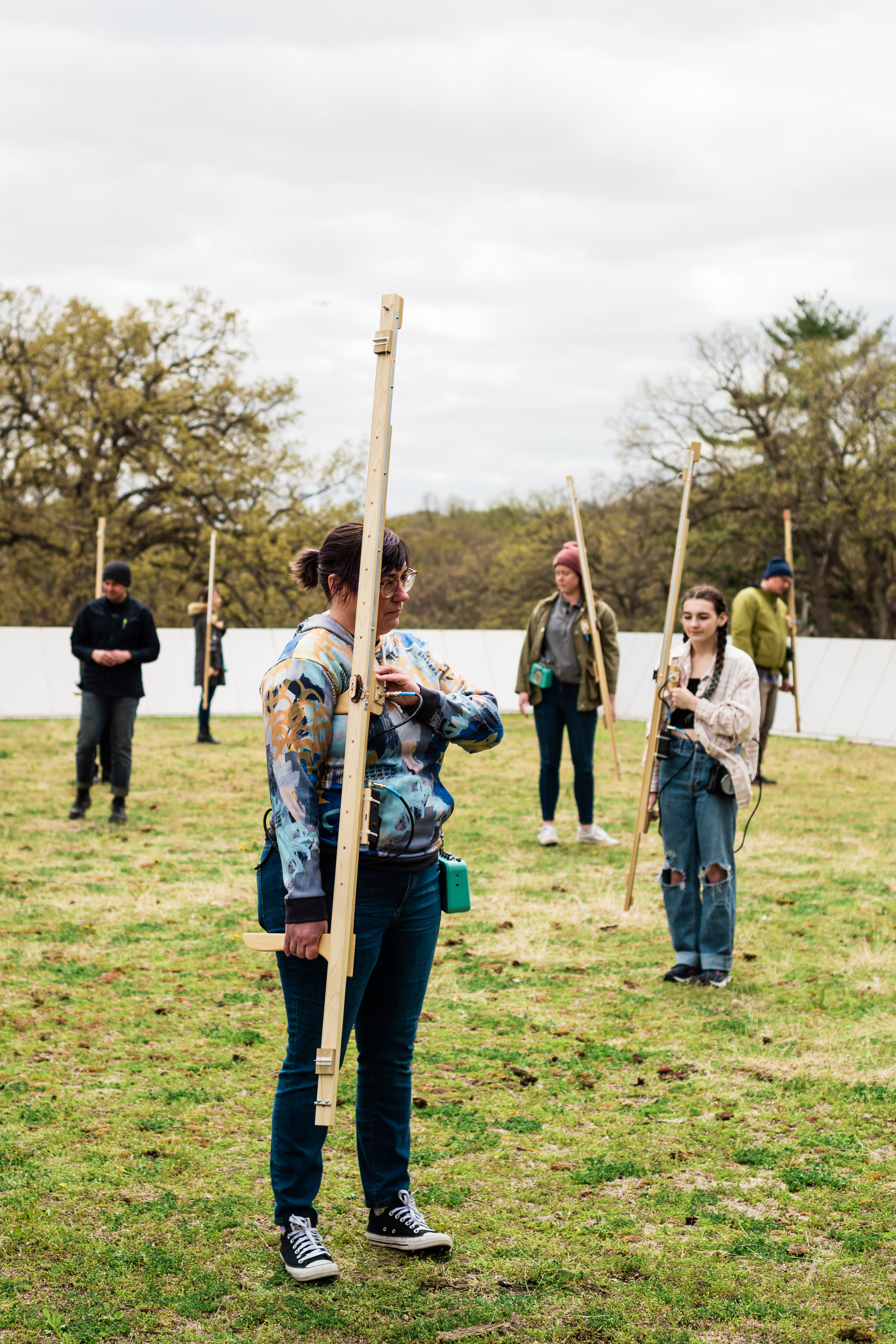
Field Harp performances at the Des Moines Art Center, spring 2023. Photography by Brittany Brooke Crow.
Plan sketch of field, and excerpt of a recording from the performance on April 30, 2023.
In addition to the Des Moines Art Center, Field Harp was supported by the Daniel J. Huberty Faculty Fellowship in Architecture at Iowa State University. Many thanks to Brittany Brooke Crow for photography, to Olivia Valentine for video, to Phil Young for audio recording, and to all the volunteer harpists who made the performances possible.Field Harp (for 9+4 performers)
New instruments and variations have been added to the Field Harp since the start of the project in 2023. These include Aeolian Bow Harps, Long-String Harps, and Slide Harps. The addition of these new instrument typologies has expanded the possible choreographies of the Field Harp, which are explored episodically in public rehearsals held monthly.


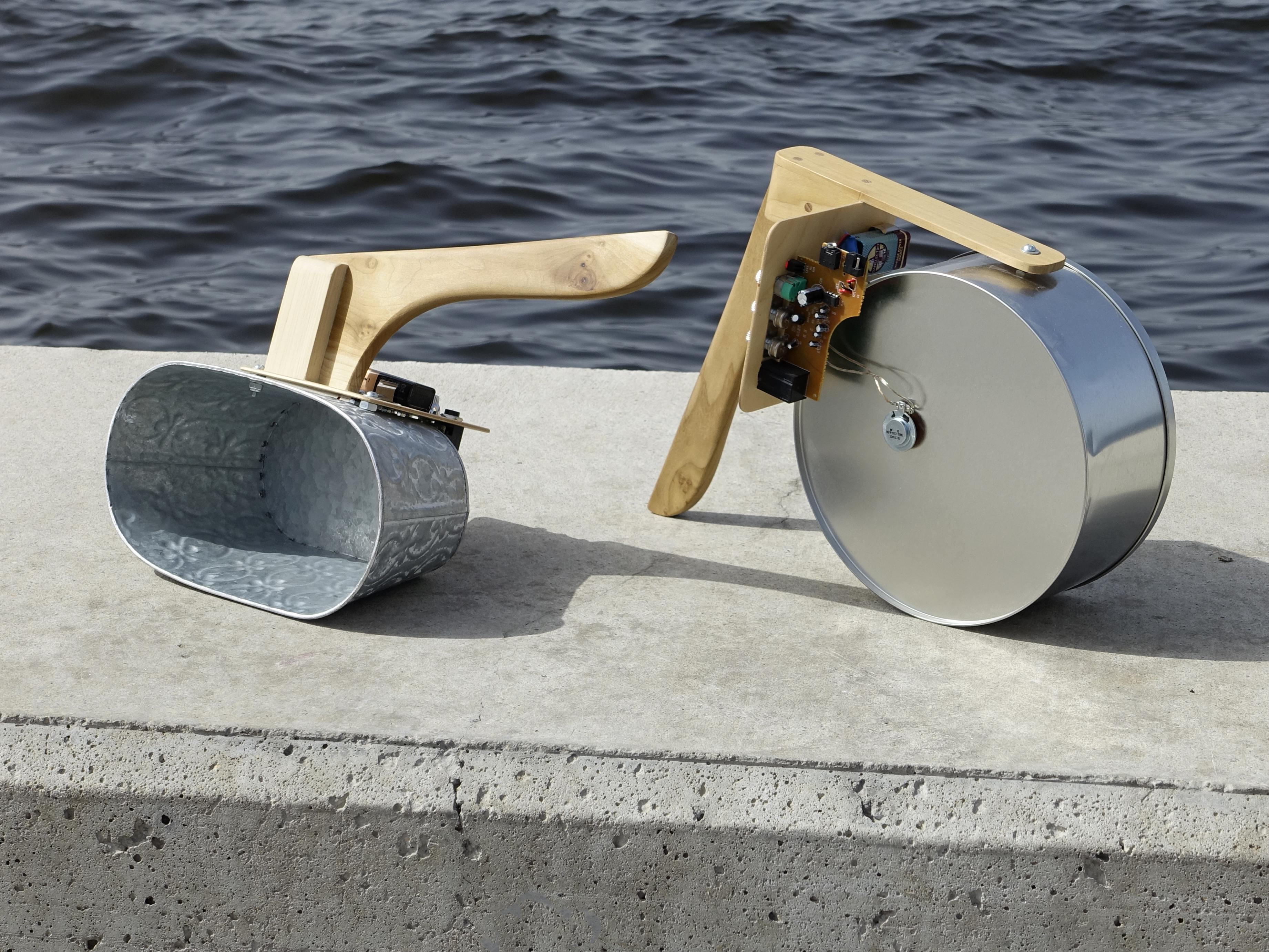



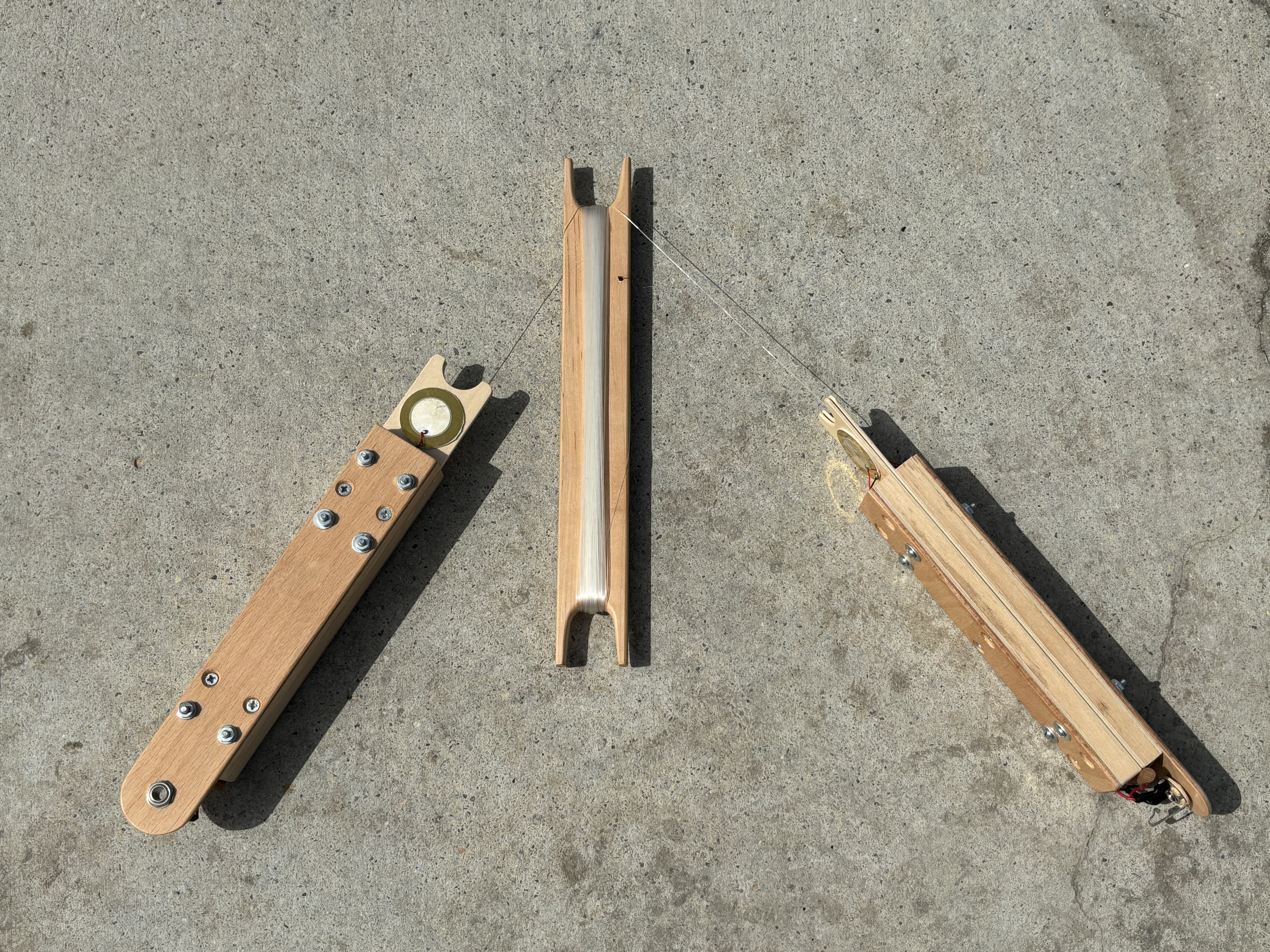





Rehearsal with the aeolian bow harps, Maquis Projects, Izmir, 2024. Photo by Ali Kemal Ertem.

Kite Choir
The Kite Choir is an ensemble of custom-made kites and sound instruments that builds upon traditions of singing kites. The sound instruments in these existing traditions are carried aloft by the kites they are attached to, as the voice-box of an assemblage brought to life by the wind. The Kite Choir instead utilizes the reel and entire tow-line of the kite as the sites of instrumentation, to promote a collaborative chain of agency between atmosphere and pilot/performer. It functions as a regime of perception, an aesthetic practice of attunement with the atmosphere.
The instruments developed so far include ribbon tow-lines attached to contact mics and portable mini-amps; tin-can resonator reels; acoustic and electric “hurdy-gurdy” reels of various sizes and materials. The score for the choir, written by the electroacoustic musician and composer Paula Matthusen, provides a set of instructions contingent upon varying aeolian, climatic, temporal, and psychological conditions. This score is printed as decks of “playing cards,” based on flag signaling systems. The videos below are some of the “soundings” in the ongoing development of the project, and more can be found at the links at the bottom of the page.

Ribbon Reels
Polyester ribbon, brass/aluminum/wood/steel plates, piezoelectric pickups, recorder or preamp +/- miniamp. 2019-2021.


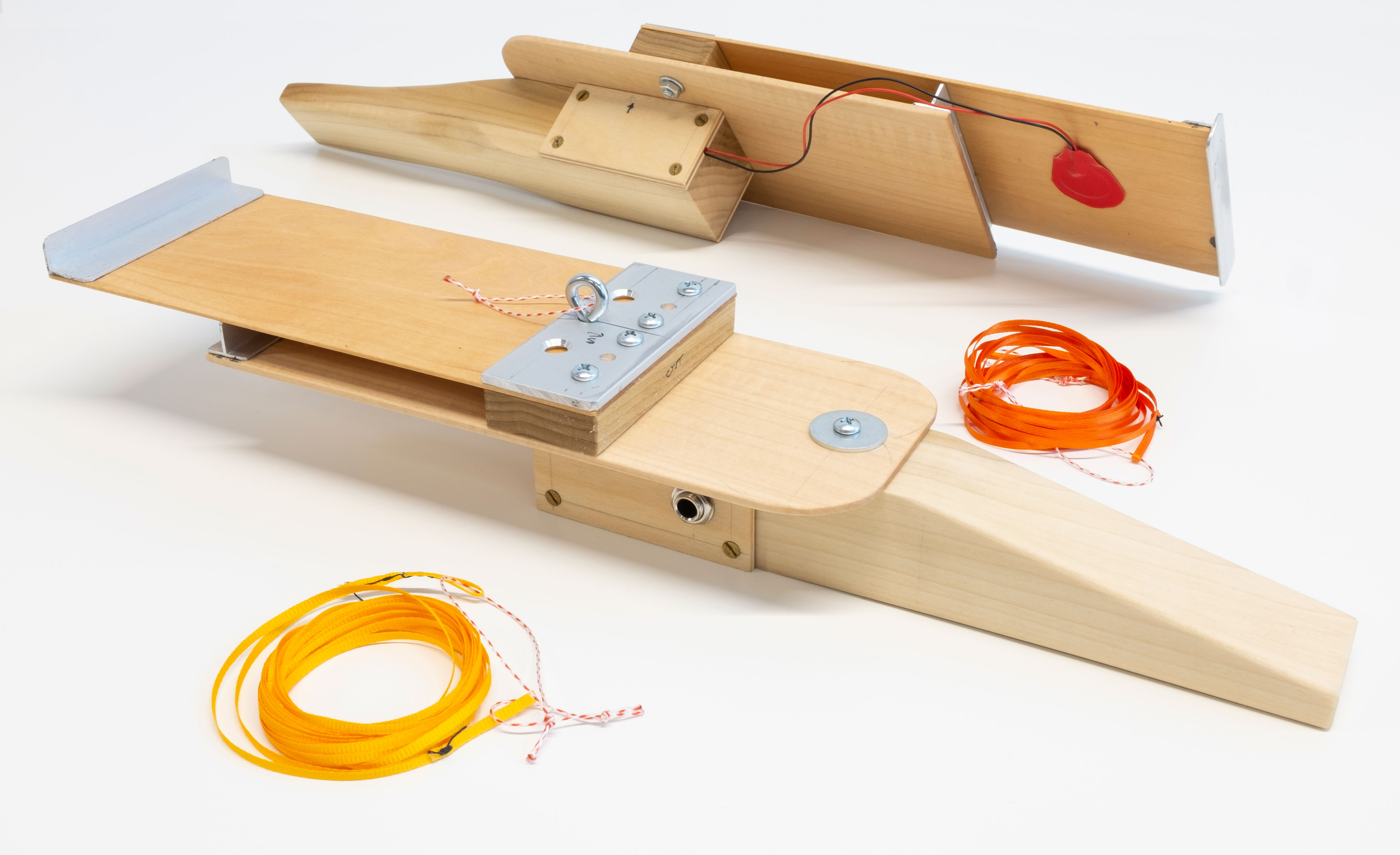

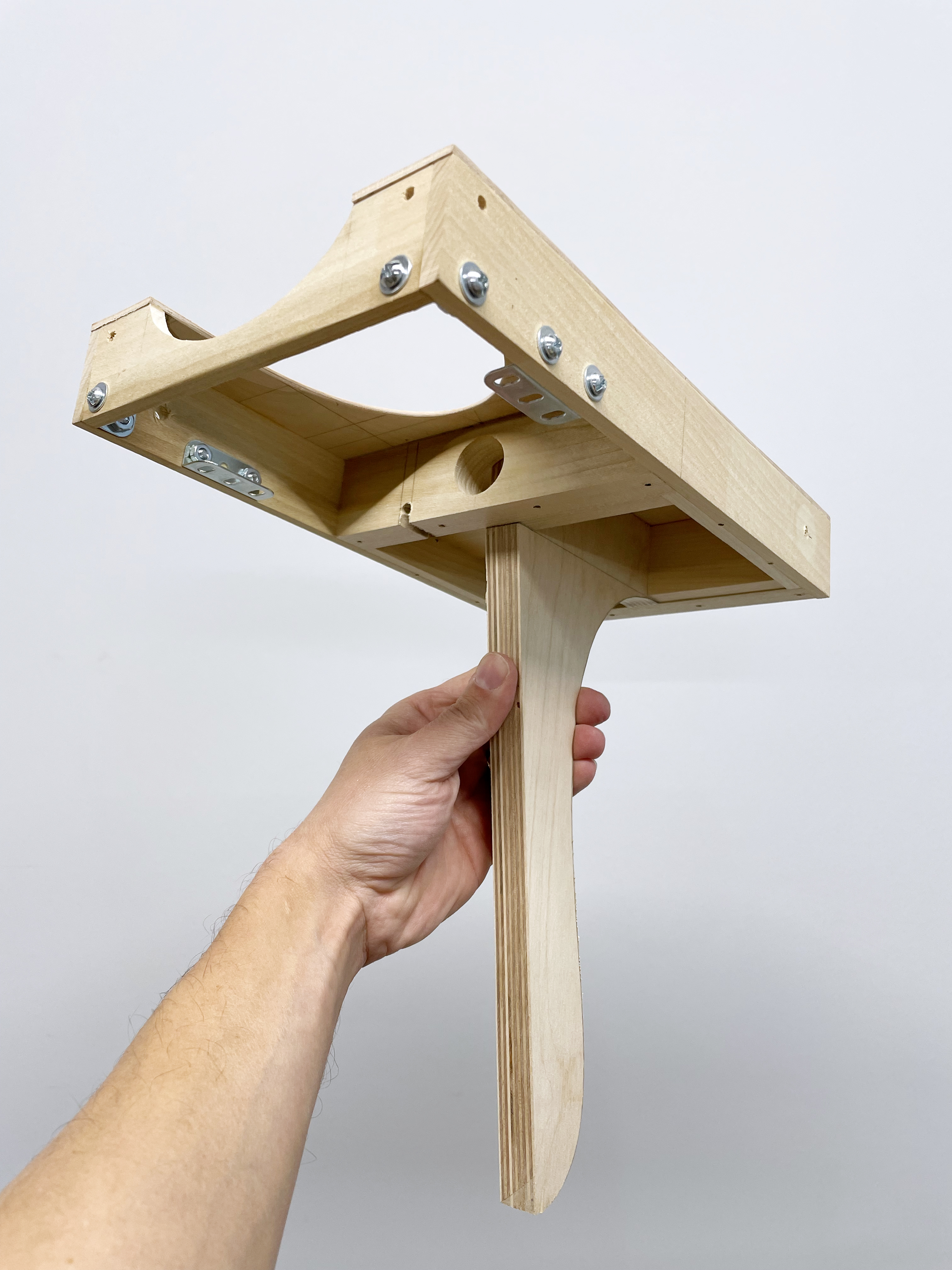
Kite Choir Sounding: May 10, 2019, Seydisfjordur (excerpt). Brass Plate Ribbon Reel.
Hurdy-Gurdy Reels
Rosined fishing line, modified fishing reel, guitar string or music wire, wood frames, made and found soundboxes +/- piezoelectric or electromagnetic pickups, and mini-amps. 2018-2020.


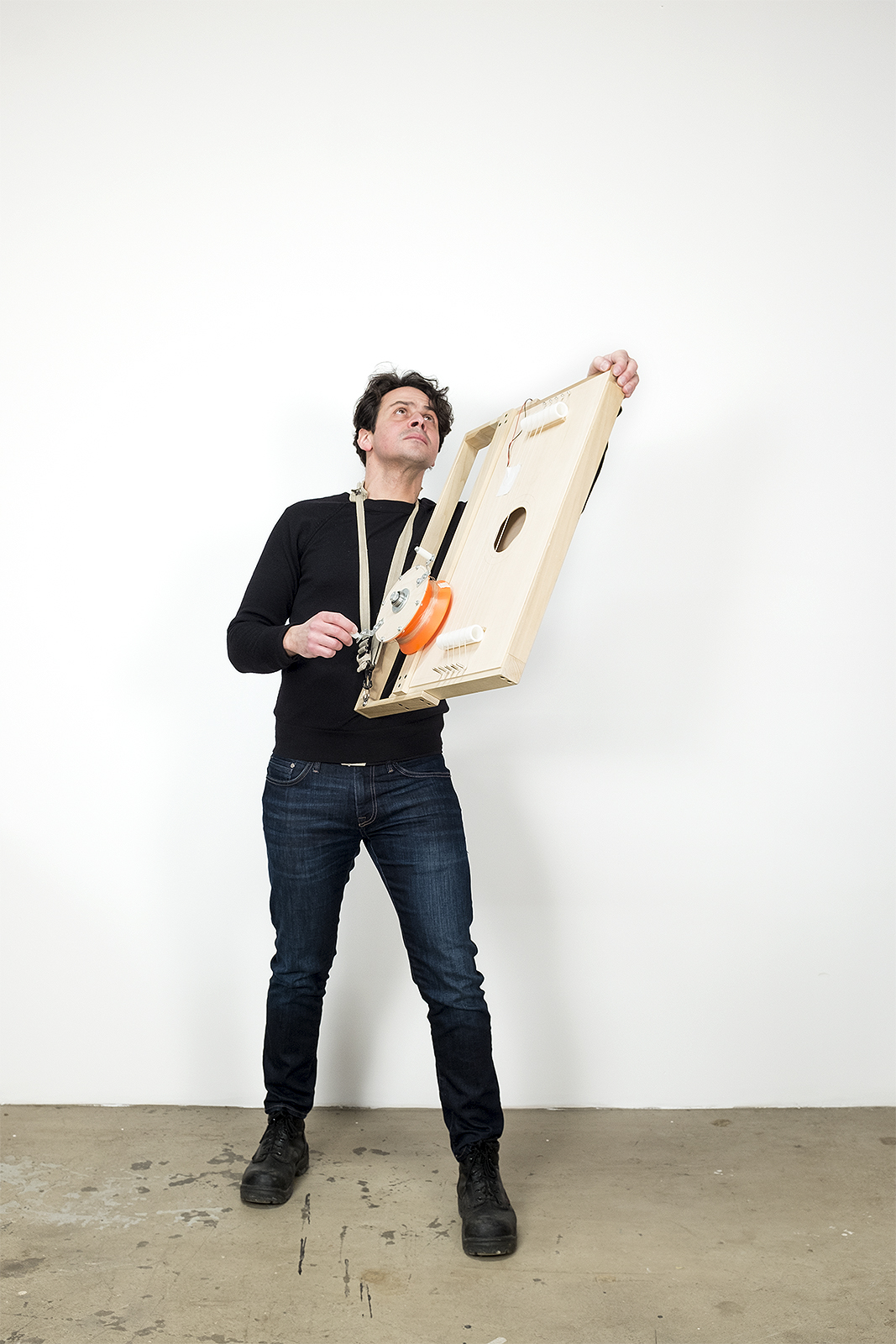
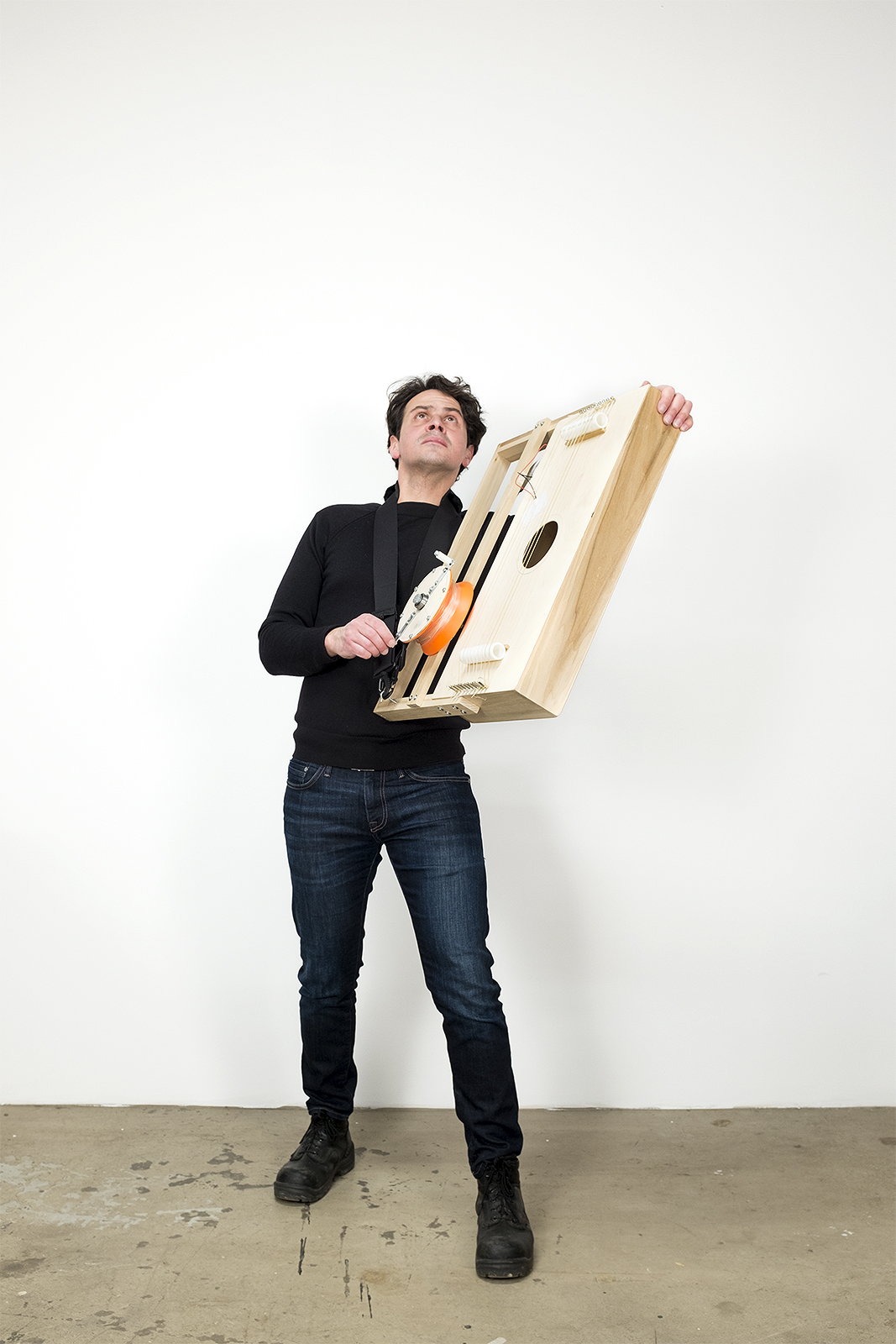



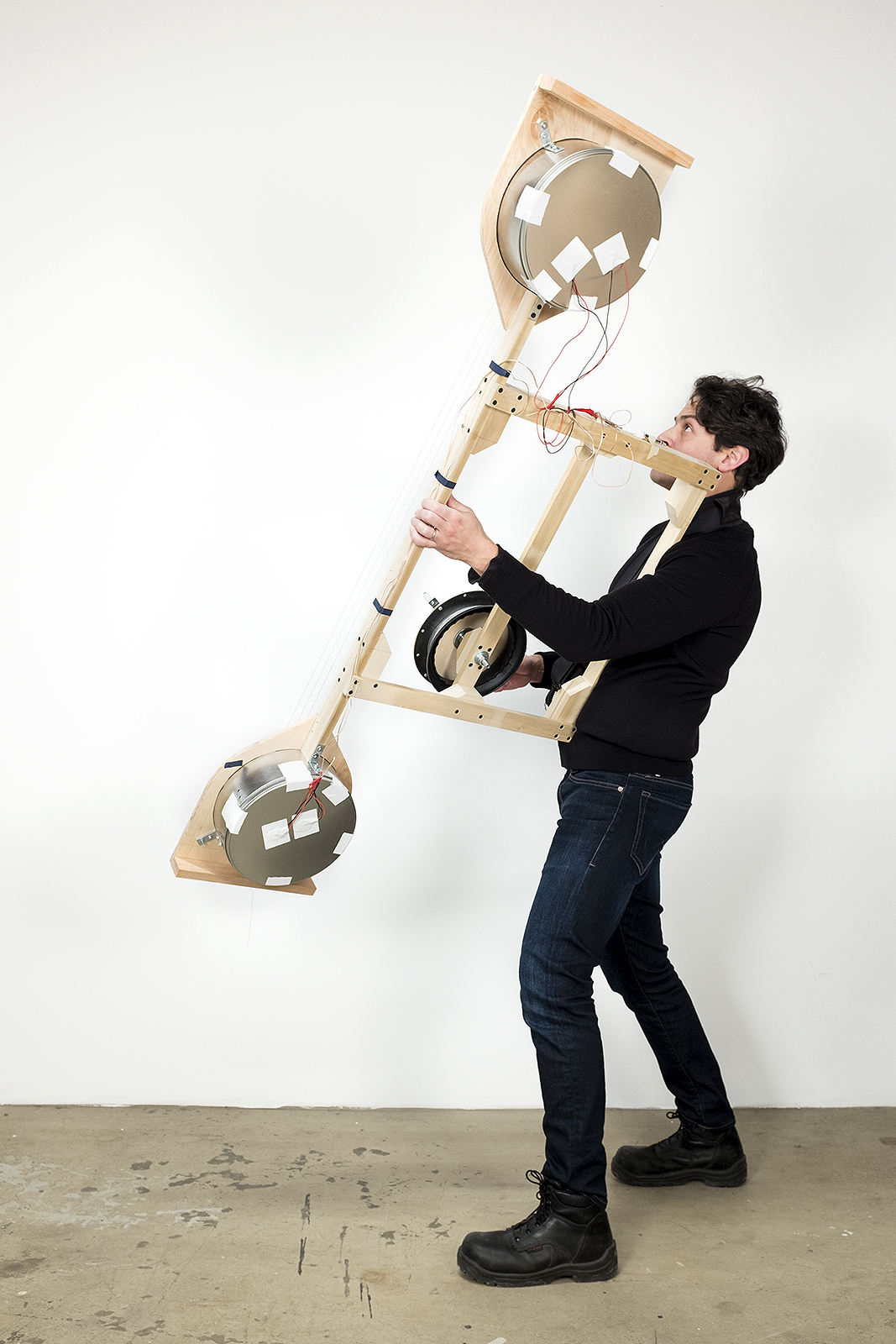


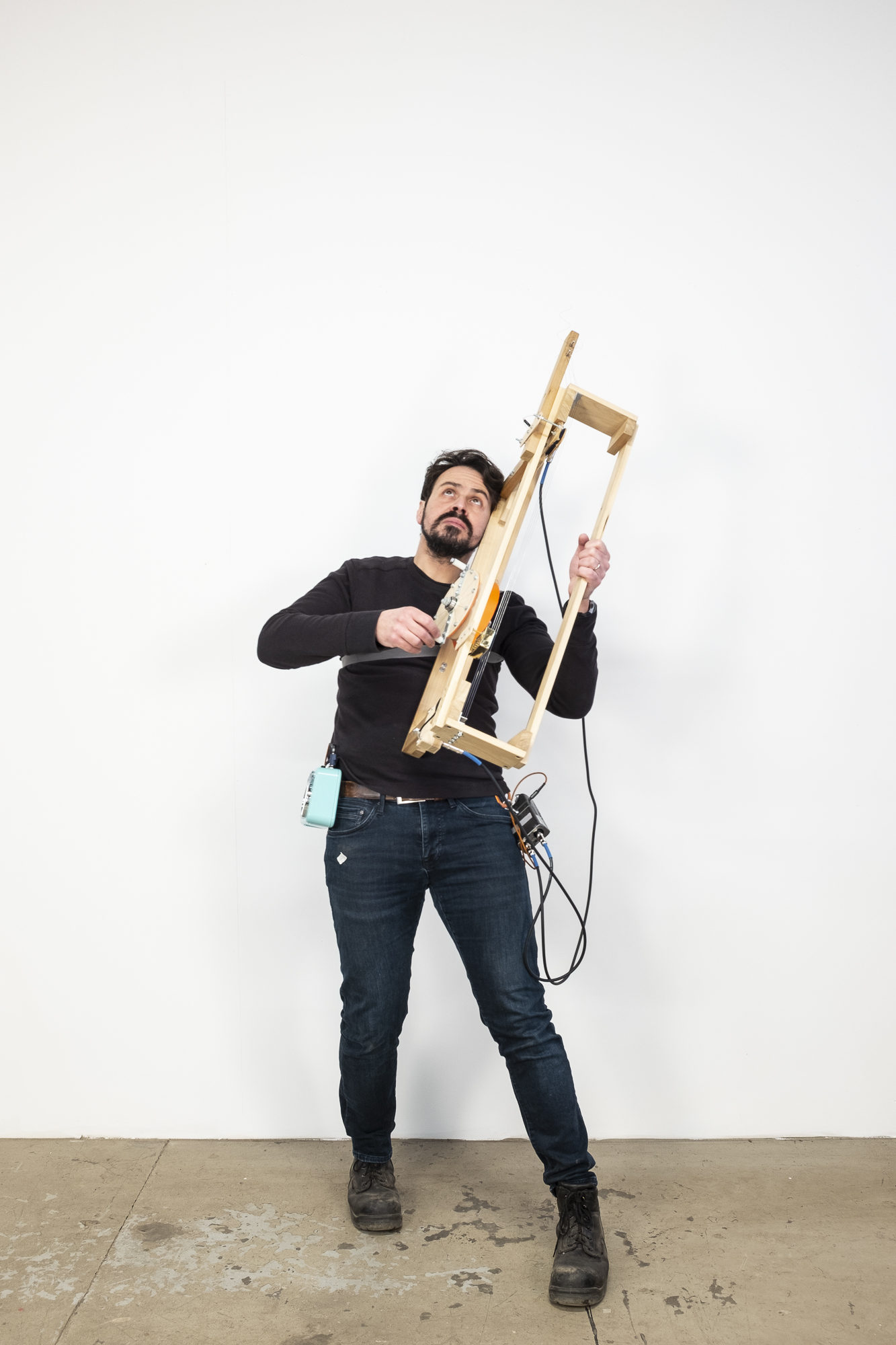










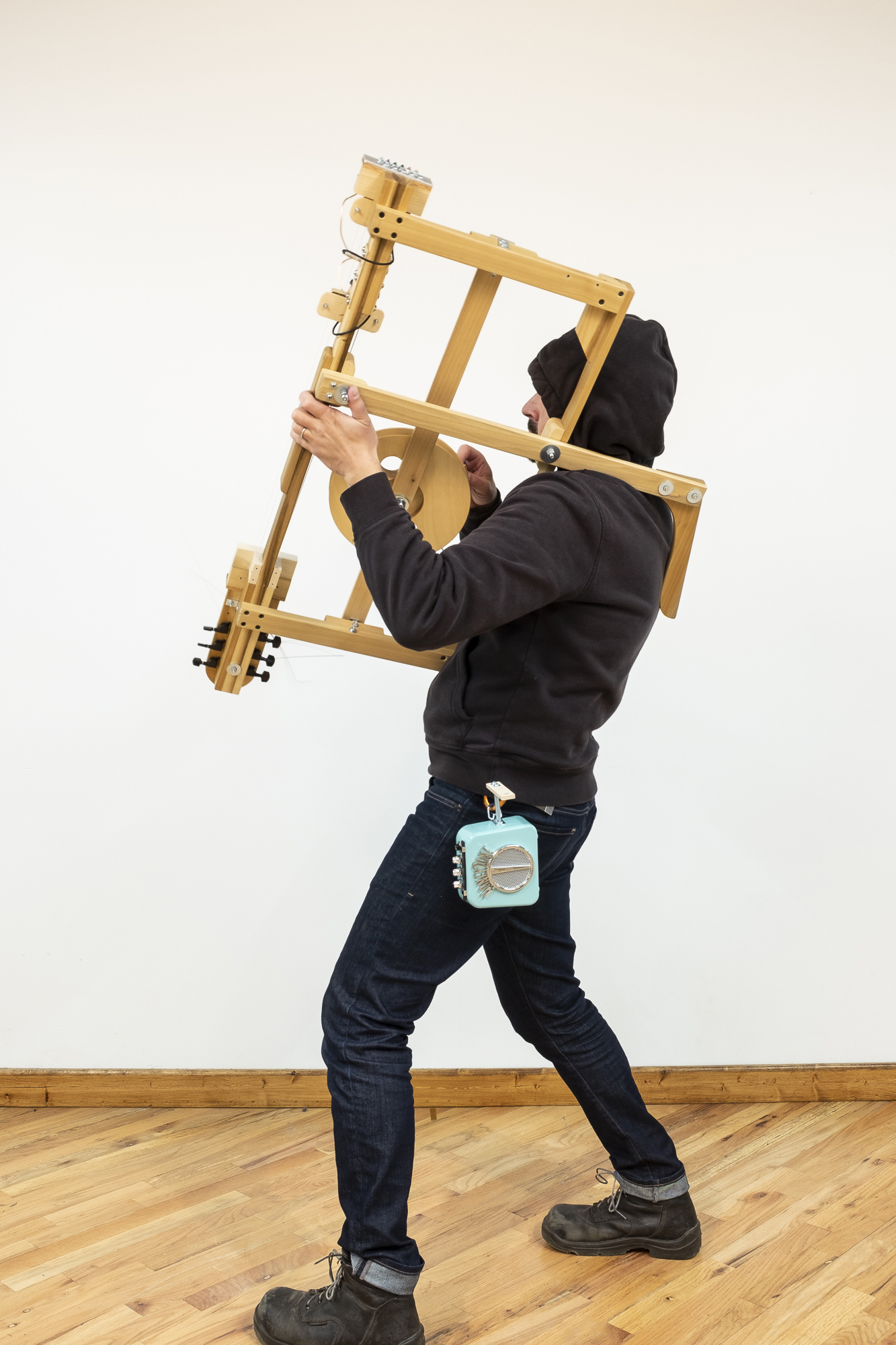


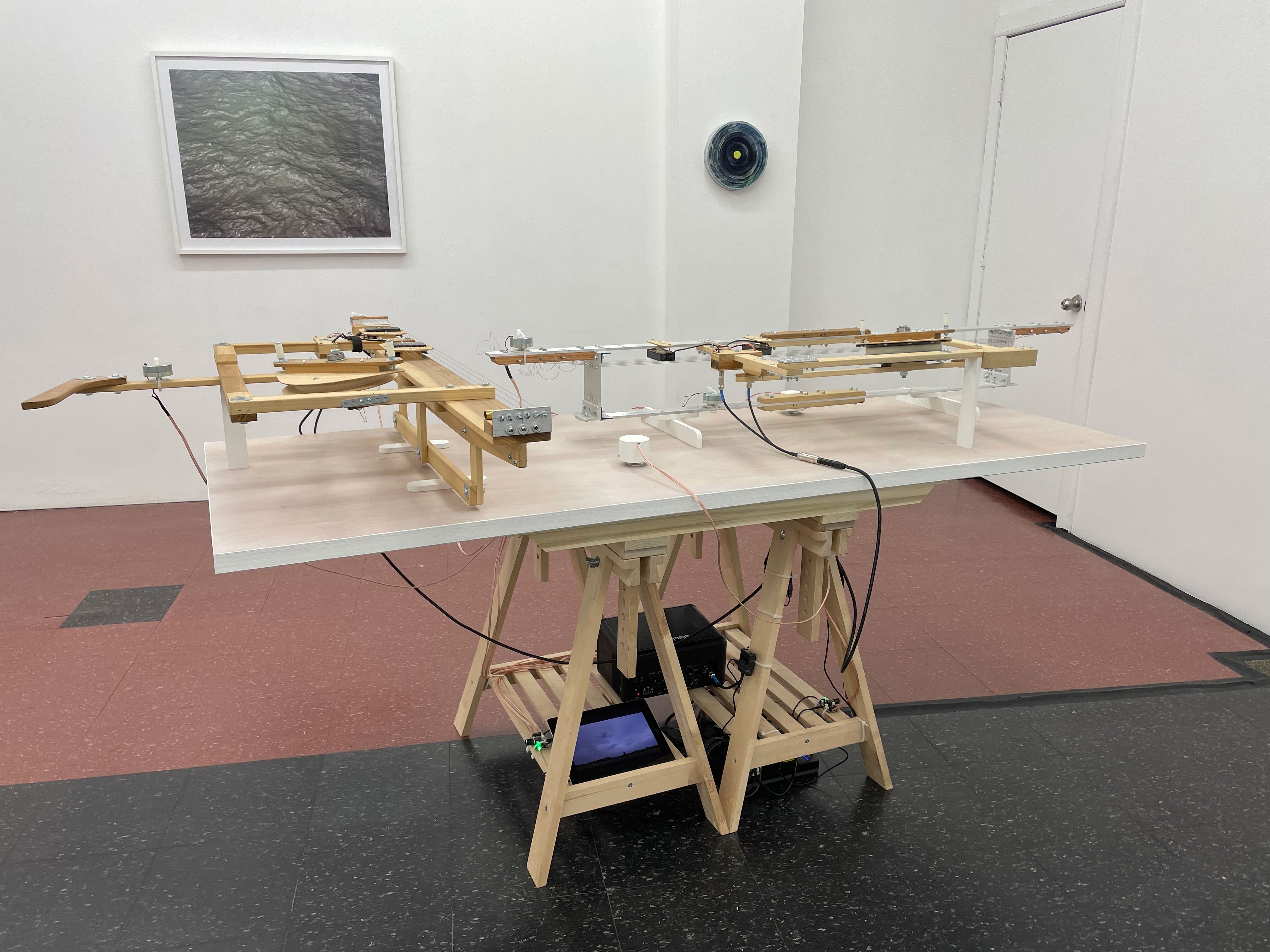
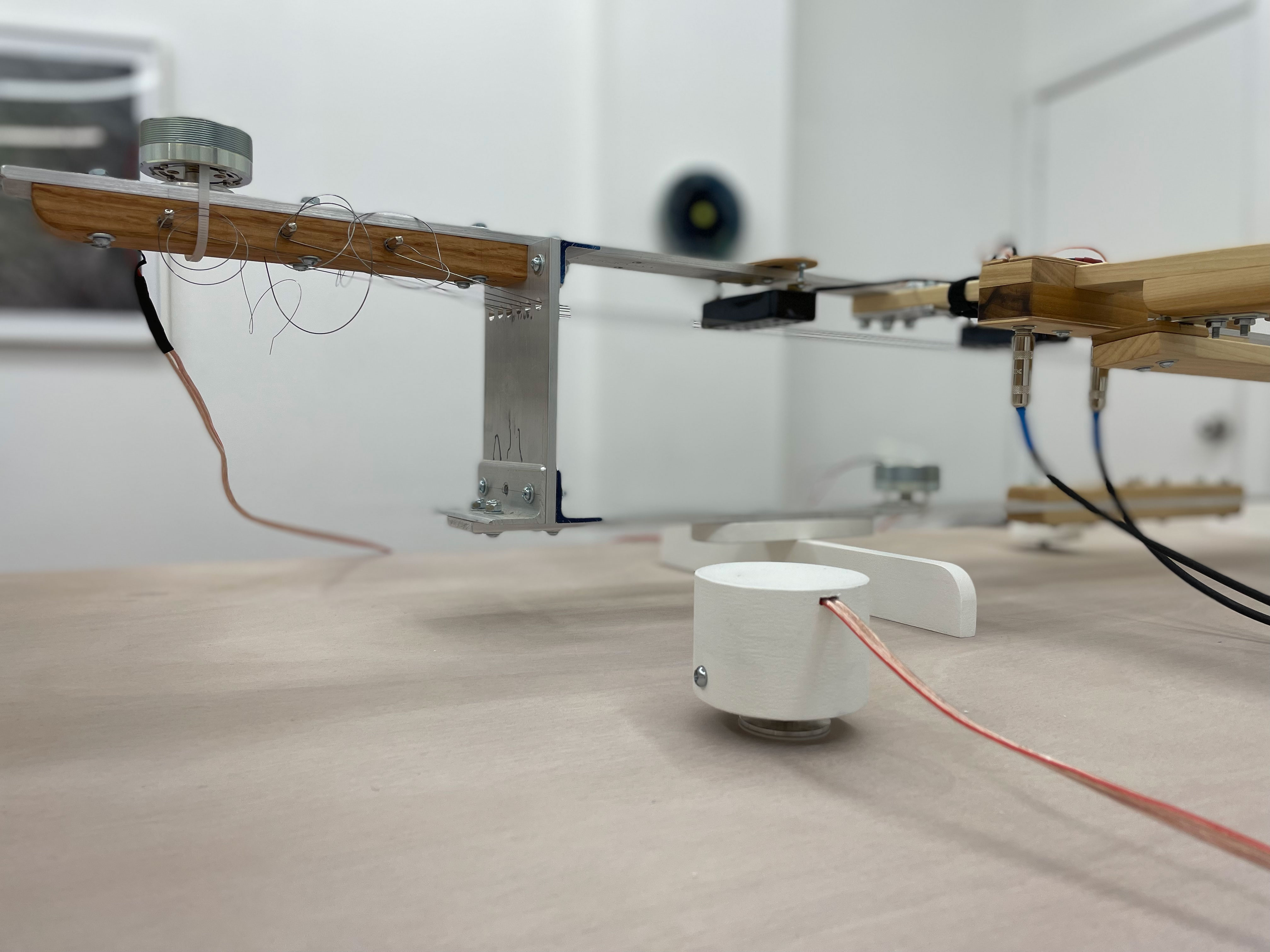
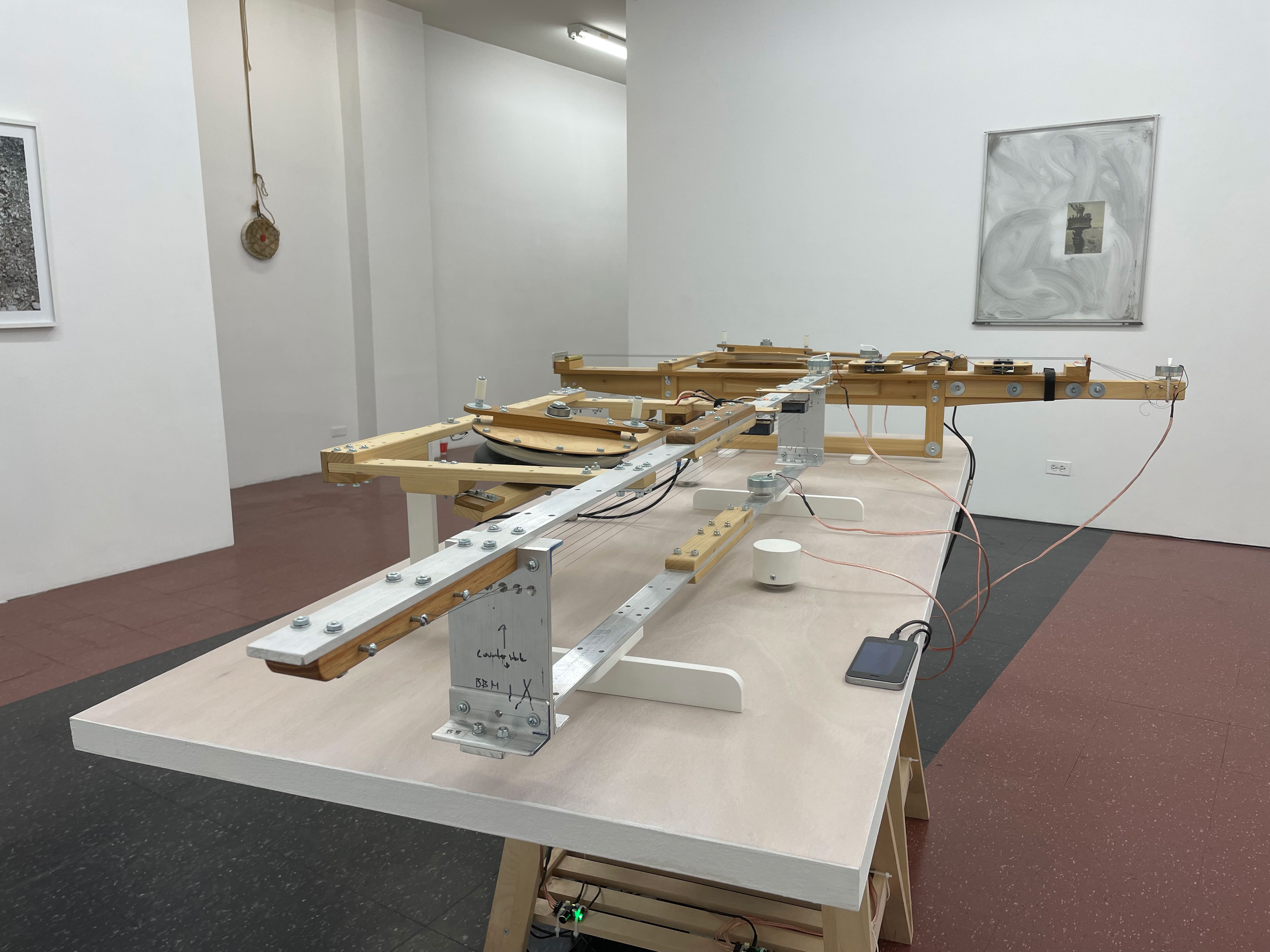
The various types of instruments in the Kite Choir are situated between two poles, neither allowing the human a sense of autonomous expression nor letting them off the hook with a passive “listening device”. The instruments with the most complex behavior so far are the “hurdy-gurdy reels”. In this family of instruments, the kite’s tow line is nylon monofilament coated with rosin, which makes it slightly sticky. As it is reeled in and out, this tow line bows a set of six musical strings, arranged low to high from reel to kite.
The strings are played open - without fingering - in alternating pull and release. The lowest string can be played alone, or one can incrementally contact more of the strings by varying the angle of the instrument in relation to the kite. Things get more interesting as the line extends further into the sky.





The kite should have just enough lift to fly. No running is necessary. The sound is not about actions – of flying or falling, pulling, playing, or bowing - but about finding durations of suspension in the air. When the line is in a tensioned curve, reeling the line in and out can be akin to breathing. Without the kite pulling up or the pilot pulling down, the two become momentary counterweights, suspended from each other. The sound of that state of suspension is when nothing seems to be happening at all, even though all the lines are vibrating. The sense is not of broadcasting sound out into an environment, but of immersing oneself in the air as if diving into an ocean.
Resonator Reels
Fishing line, fishing reels modified with rosined acrylic lip, wood bridges, found resonators +/- piezoelectric pickups. 2018.
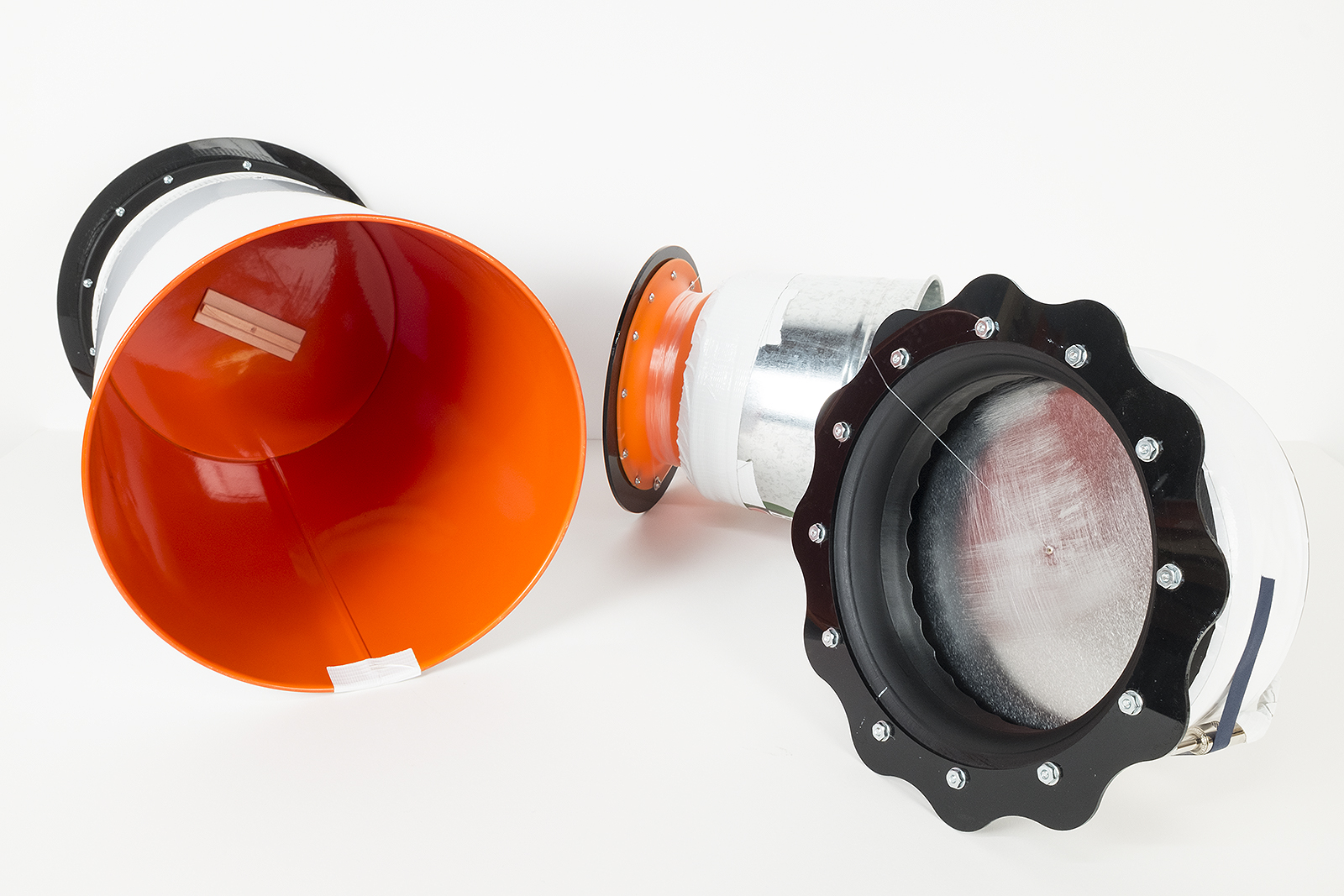
Kite Choir Sounding: June 11, 2019. Seyðisfjörður, Iceland. Double cookie can resonator reels.
Kite Choir Score
The Kite Choir score, by Paula Matthusen, provides sets of variable instructions based on climatic, aeolian, temporal, and psychological conditions. The score is printed as a deck of playing cards, designed and fabricated by Kaitlin McCoy.

One way this practice impacts daily life is through its effects on time, or schedule. One cannot choose the how of performance independently of the where and when. As a fisherman, farmer, or surfer would know, one is subject to the weather. The phrase, “weather permitting”, states a limitation but can also serve as a license.
One learns to see the ground and its features – buildings, hills, trees, bodies of water – in terms of the wind. The place is the real body of the instrument. Over the course of this practice, a light breeze in a Venetian alley allowed the first overtones to emerge; in Seyðisfjörður, a failed collaboration with an existing sound sculpture precipitated various tunings, and the joy of flying in fog; while in the textured, gusty winds of Iowa, the static charge of approaching thunderstorms became audible.
Excerpts of Kite Choir Soundings
Rodeo Beach, California (Headlands Center for the Arts)
The Kite Choir has been supported by residencies at the Headlands Center for the Arts, in California; Sculpture Space, in New York; Heima, in Seyðisfjörður, Iceland; the 20 Artists / 20 Parks Initiative by Iowa Arts Council and Department of Natural Resources; the Daniel J. Huberty Faculty Fellowship from the Department of Architecture, and a Research Grant from the Center for Excellence in the Arts and Humanities at Iowa State University.
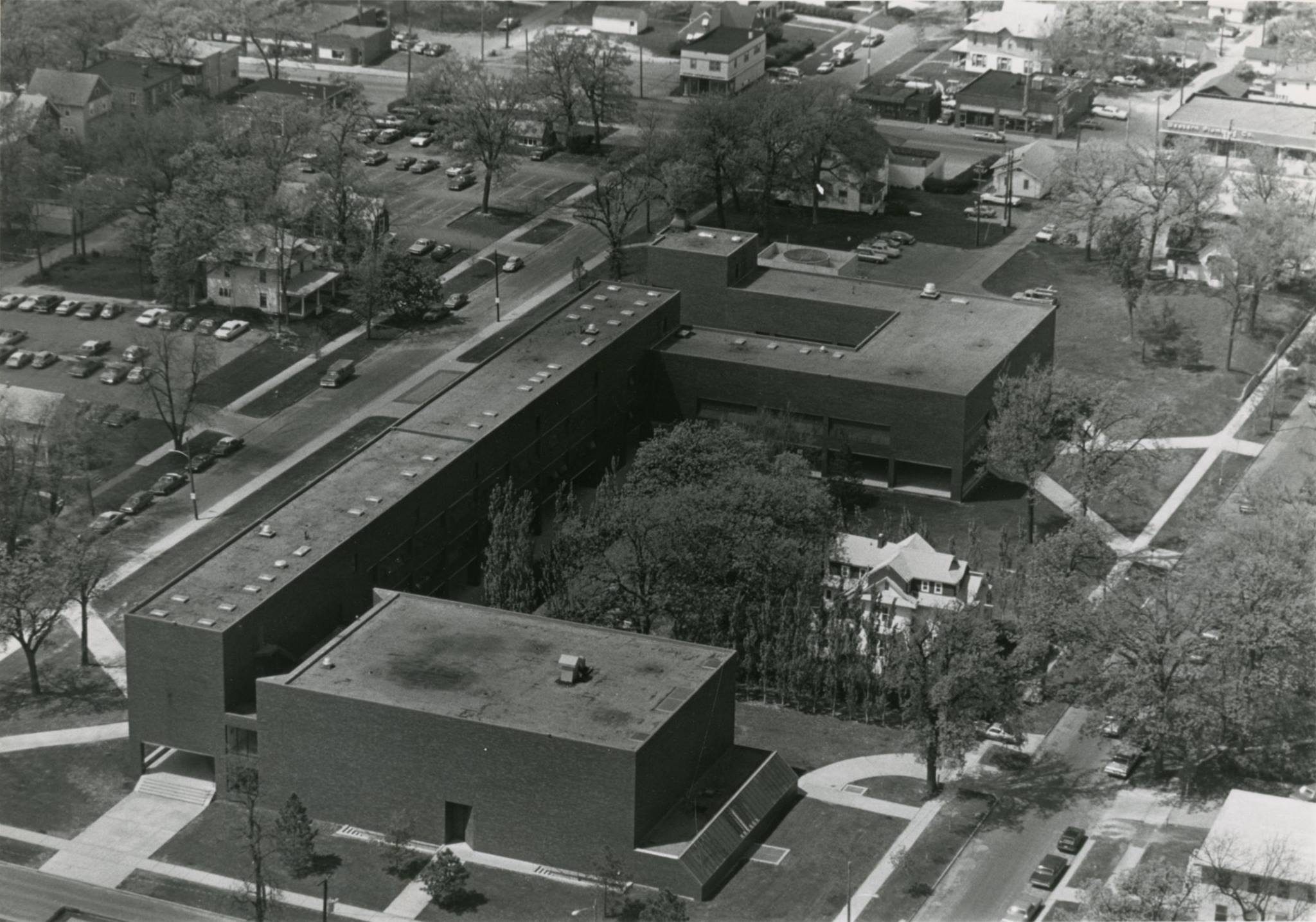
All enclosed spaces were at one point “outside,” and are still pervaded by its existential medium of air, despite erected boundaries. Architectural interiority is rooted in a pervasive notion of a personal or corporeal interiority, as though we were looking out from inside our bodies. LOOM︎ROOM︎HARP is an installation that questions this notion of interiority and its consequences at corporeal, architectural, and urban scales by weaving together inside and outside, near and far, visible and invisible, artifacts of the past and actions in the present, through the space of the Anderson Gallery at Drake University, in Des Moines. This site-specific installation and series of performances took place periodically from September 2 through October 15, 2021, is a collaboration between Fırat Erdim, Paula Matthusen, and Olivia Valentine.
The performances were accessible both in-person and online, via Sunship, the website of the Arts Letters & Numbers 2021 Venice Architecture Biennale Italian Virtual Pavilion. A discussion panel was held on October 30, 2021, by Arts Letters & Numbers.
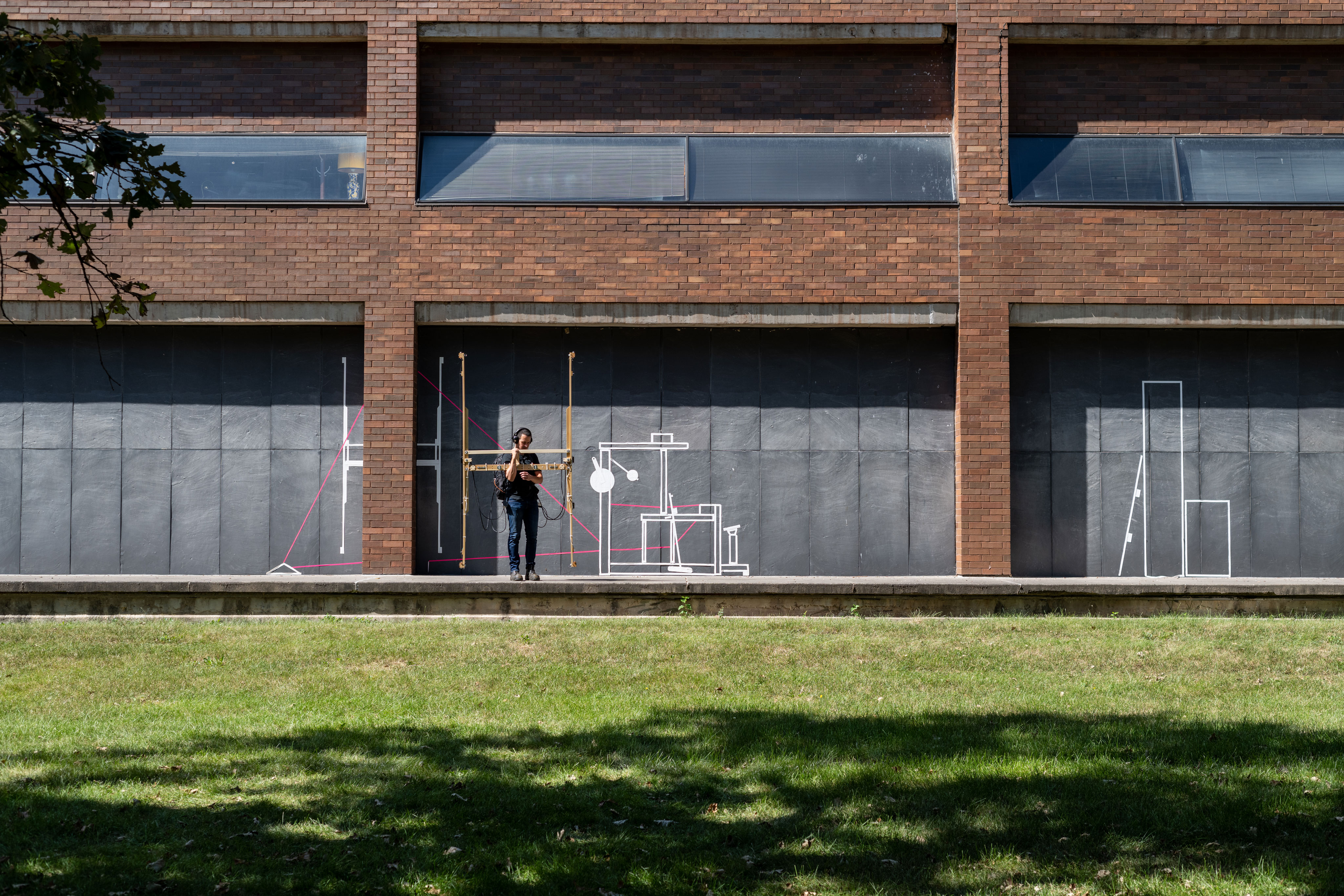

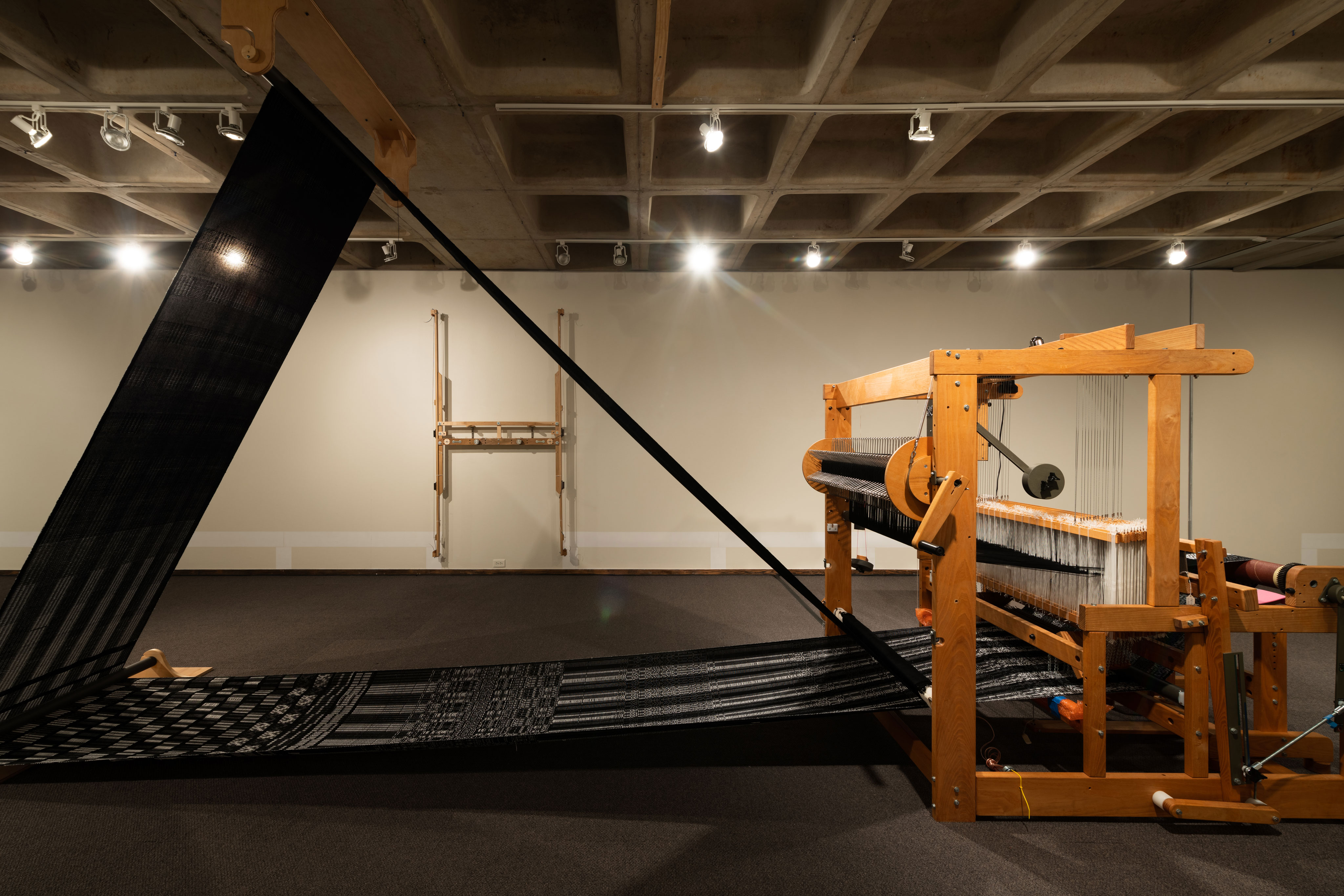



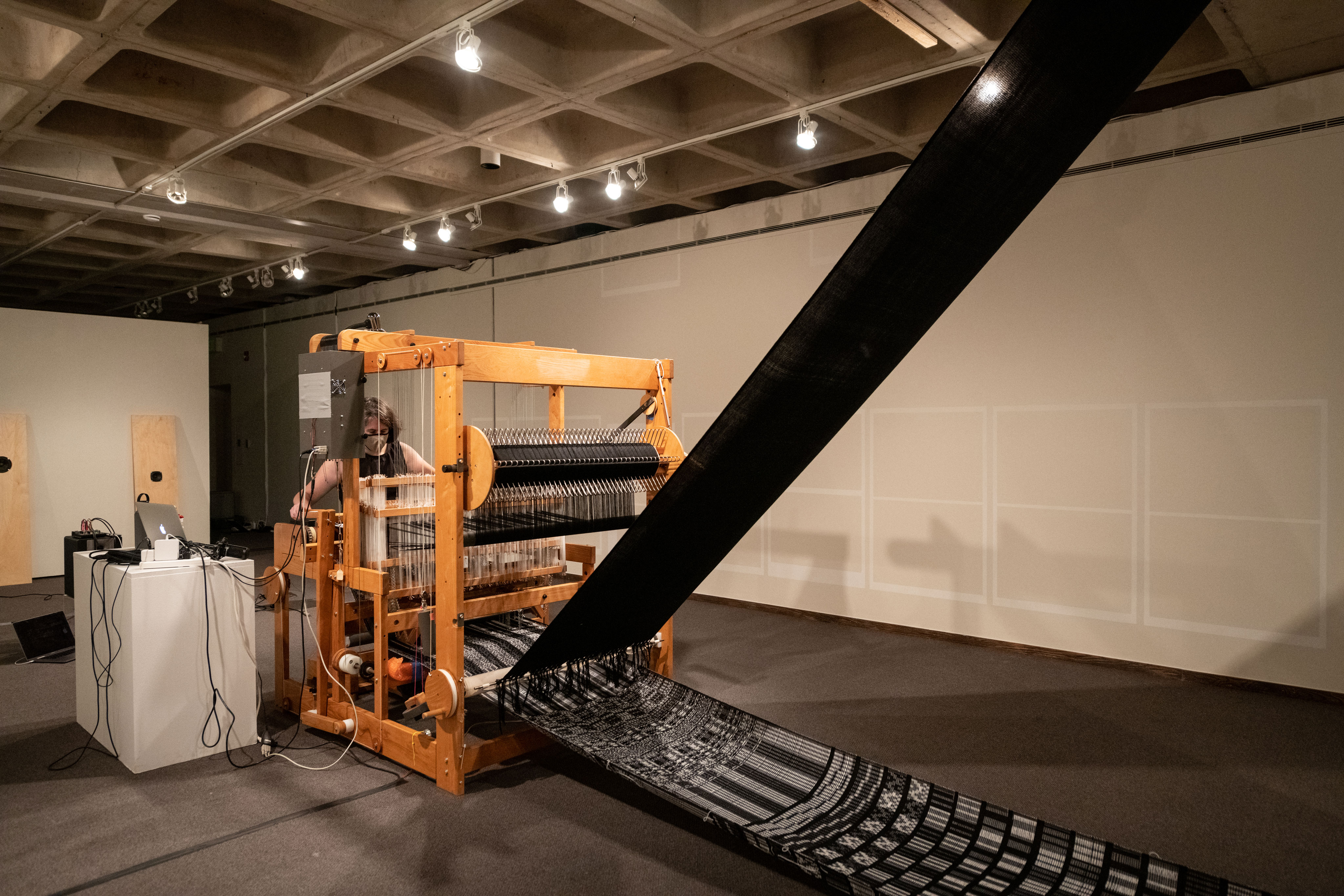


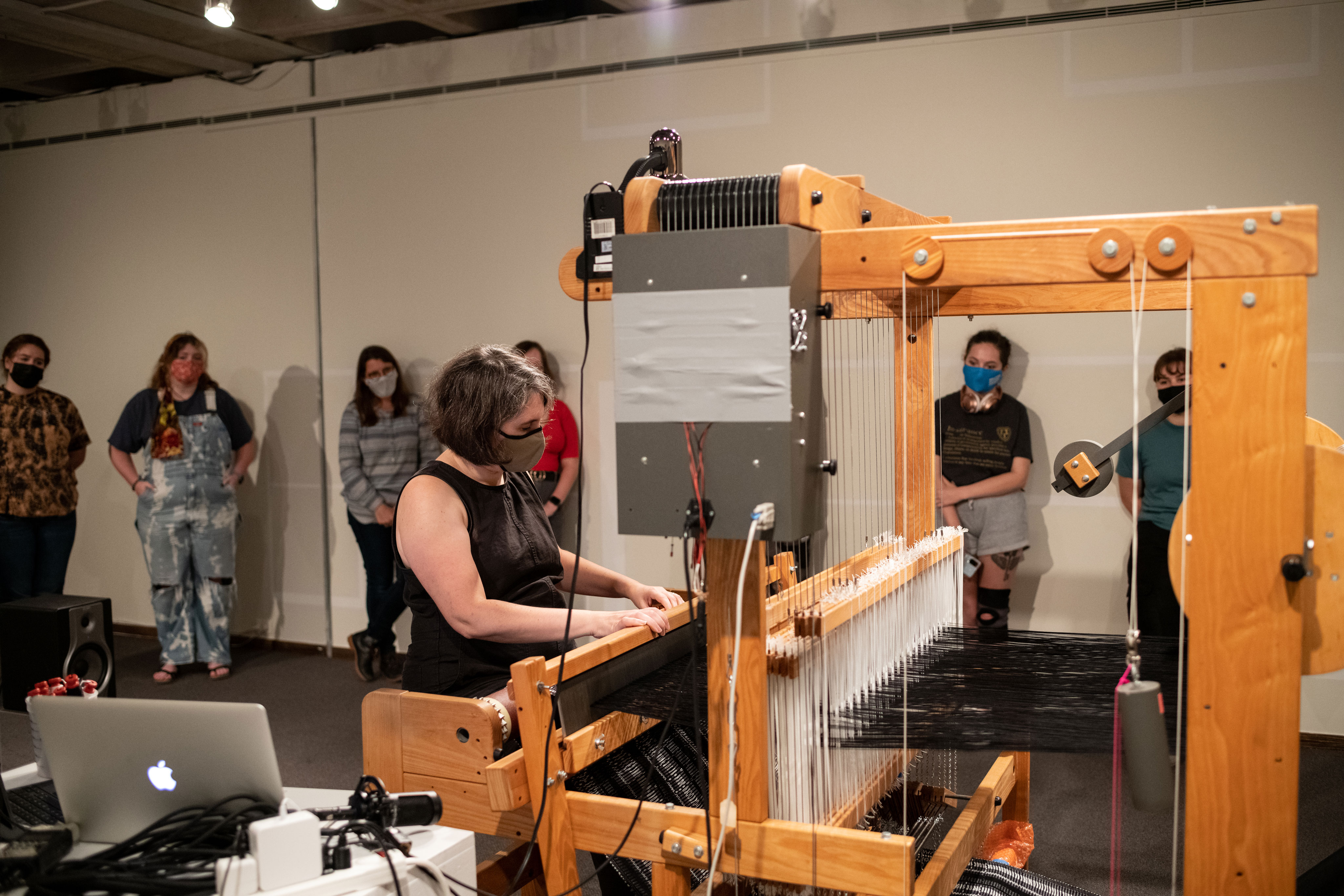
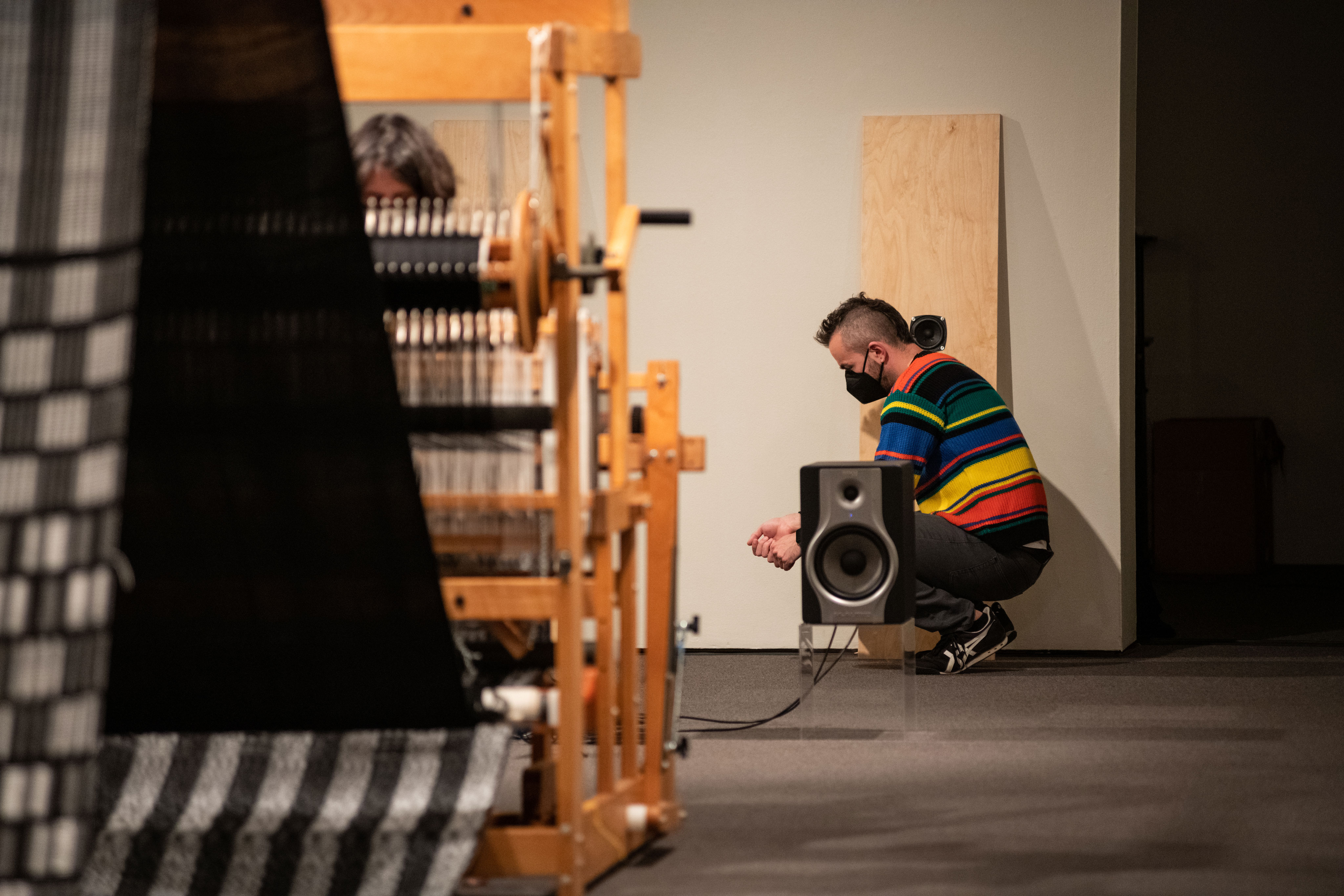

Throughout the course of the exhibition, the Anderson Gallery contained dynamic visual and audio artifacts of the periodic performances. Together, these artifacts, performances, and other components of the installation seek to permeate interior with exterior, here with there, now with then.
Performance Schedule (all times are in US Central Time):
Thursday, September 9, 2021: Performance 4:30pm-6:30pm CDT
Thursday, September 16, 2021: Performance 12pm-2pm CDT with special guest Sam Wells!
Thursday, September 23, 2021: Performance 4:30pm-6:30pm CDT
Thursday, September 30, 2021: Performance 12:30pm-1:30pm CDT
Thursday, October 14, 2021: Final Performance 4:30pm-6:30pm CDT with special guests Cameron Gray and Terri Hron!
Many thanks to the Iowa Arts Council, Sculpture Space, Drake University, the Daniel J. Huberty Faculty Fellowship in Architecture and the Department of Architecture at Iowa State University for their support of this project.
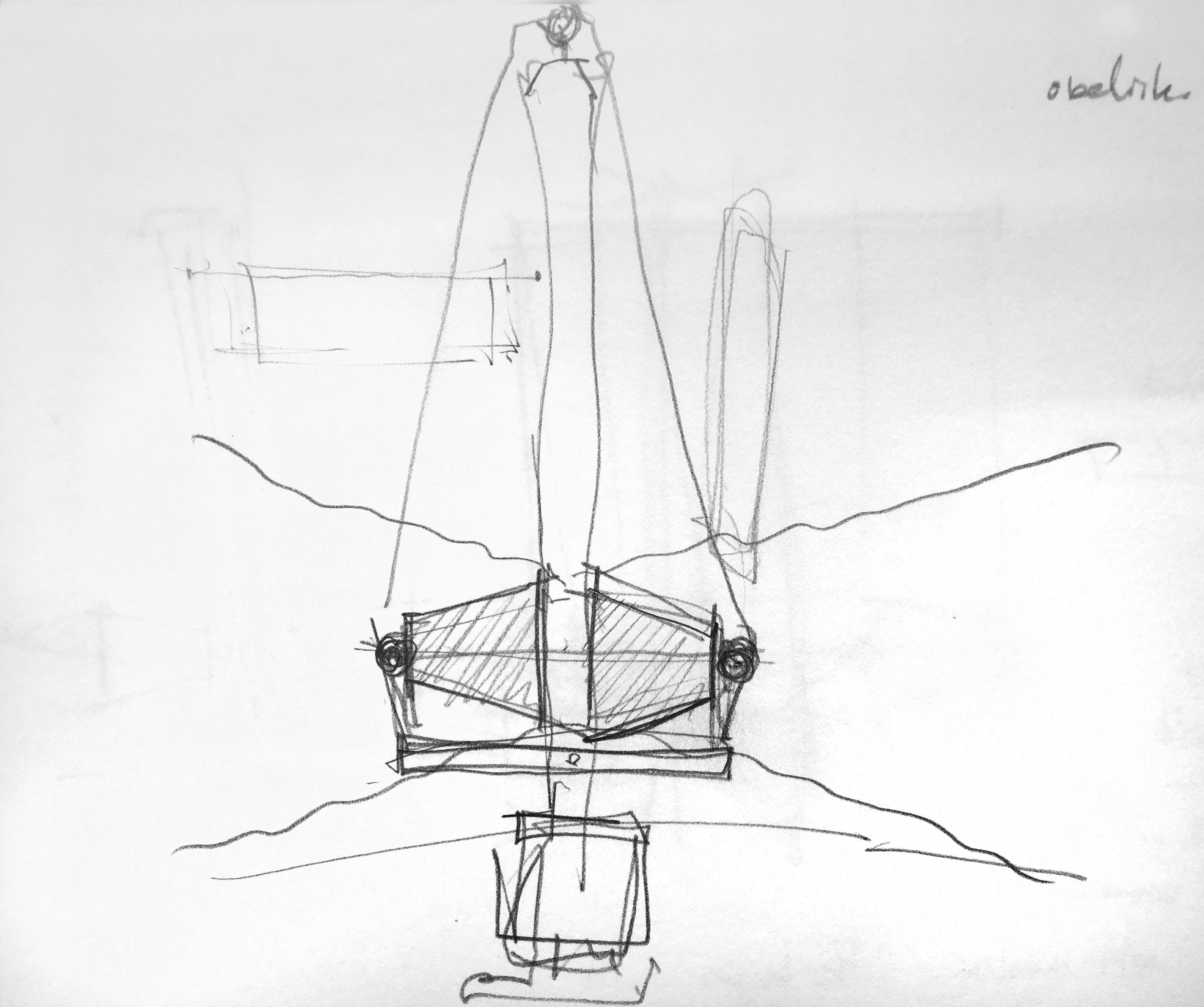
Walking Harps and Atmospheric Listening Stations
Related to the instruments of the Kite Choir, Walking Harps and Atmospheric Listening Stations explore:
- The aeolian harp as an ‘active’ instrument that one can play, by moving and roaming in relation to the wind.
- The aeolian harp as an instrument with which to make the dynamic thickness of the atmosphere palpable.
Walking Harps
Mono Walking Harp at Quarter Turn (2020). Wood frame, piano wire, single-string electromagnetic pickup, miniamp.
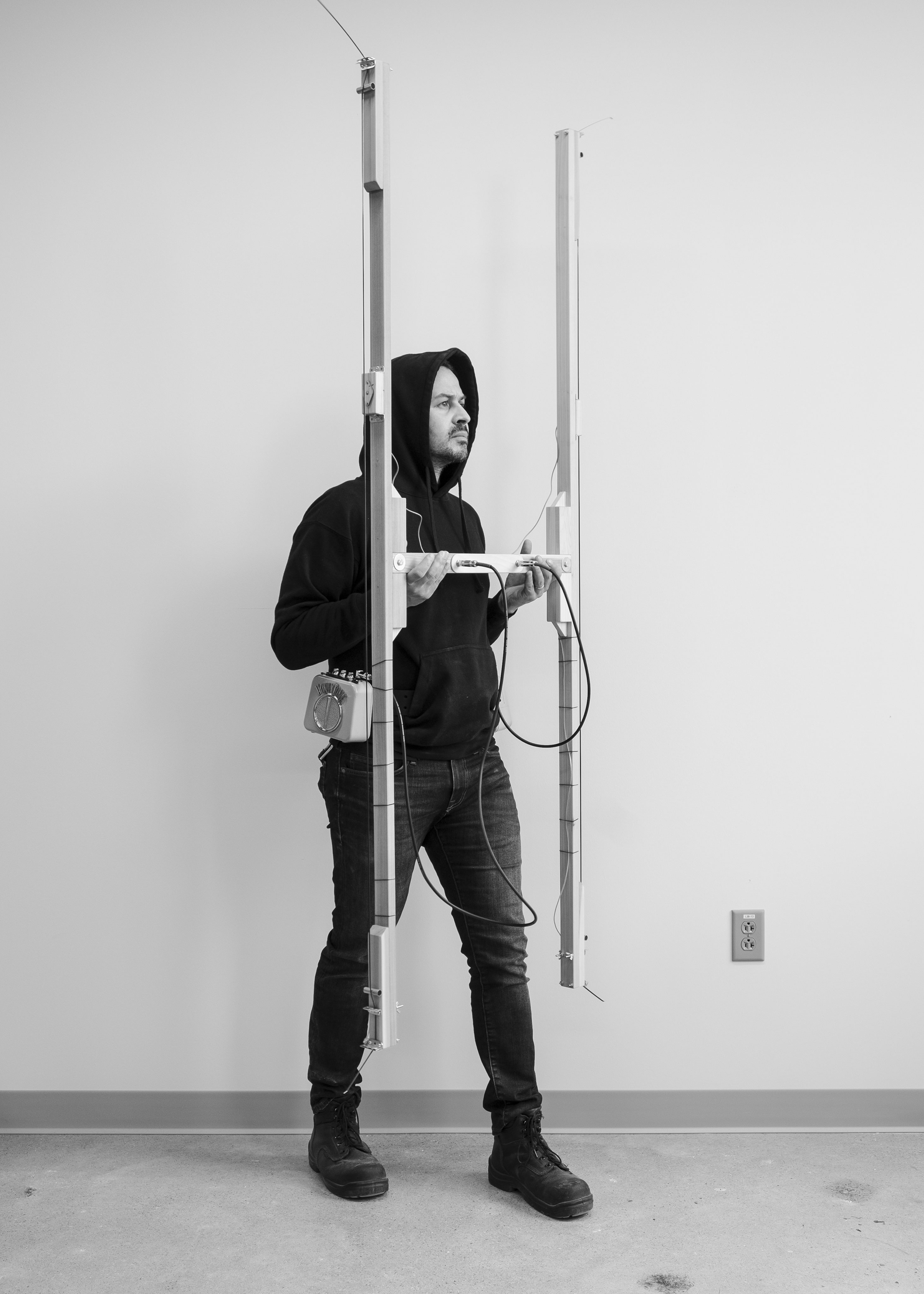
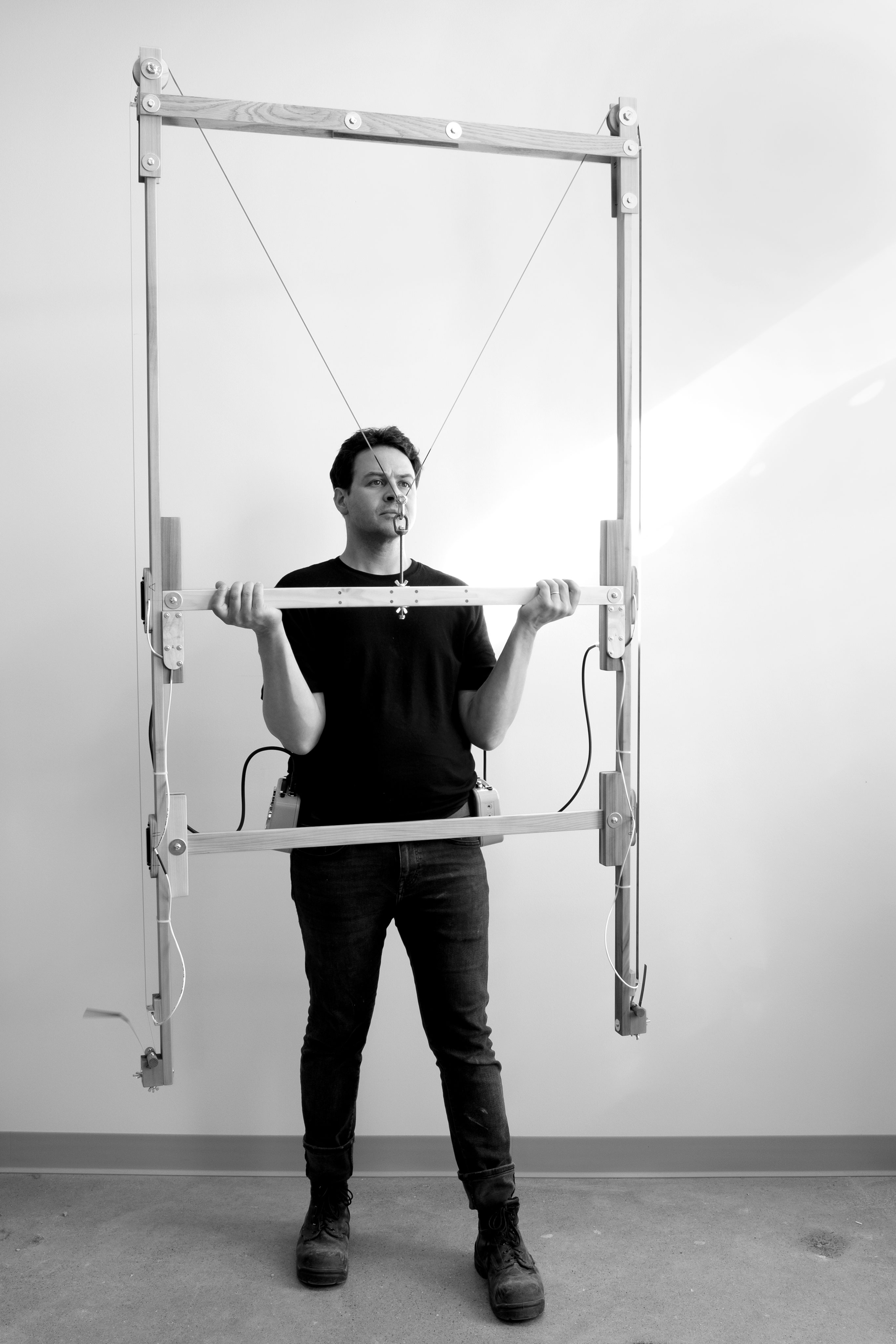
Stereo Walking Harp Sound Test (2021). Wood frame, 1/4” steel ribbons as strings, two single-string electromagnetic pickups to direct boxes and recorder. Sculpture Space, Utica, New York.
See also: LOOM︎ROOM︎HARP
Atmospheric Listening Stations
Tests for the atmospheric listening stations emerged in consideration of the six foot distance between people recommended in the USA during the Covid-19 Pandemic. If a single string vibrates in response to the flow of air in that one spot, what is the difference in how the air flows across six feet?
Fırat Erdim and Olivia Valentine, Socially Distanced Electric Aeolian Harps. May 29, 2020. Des Moines, Iowa.

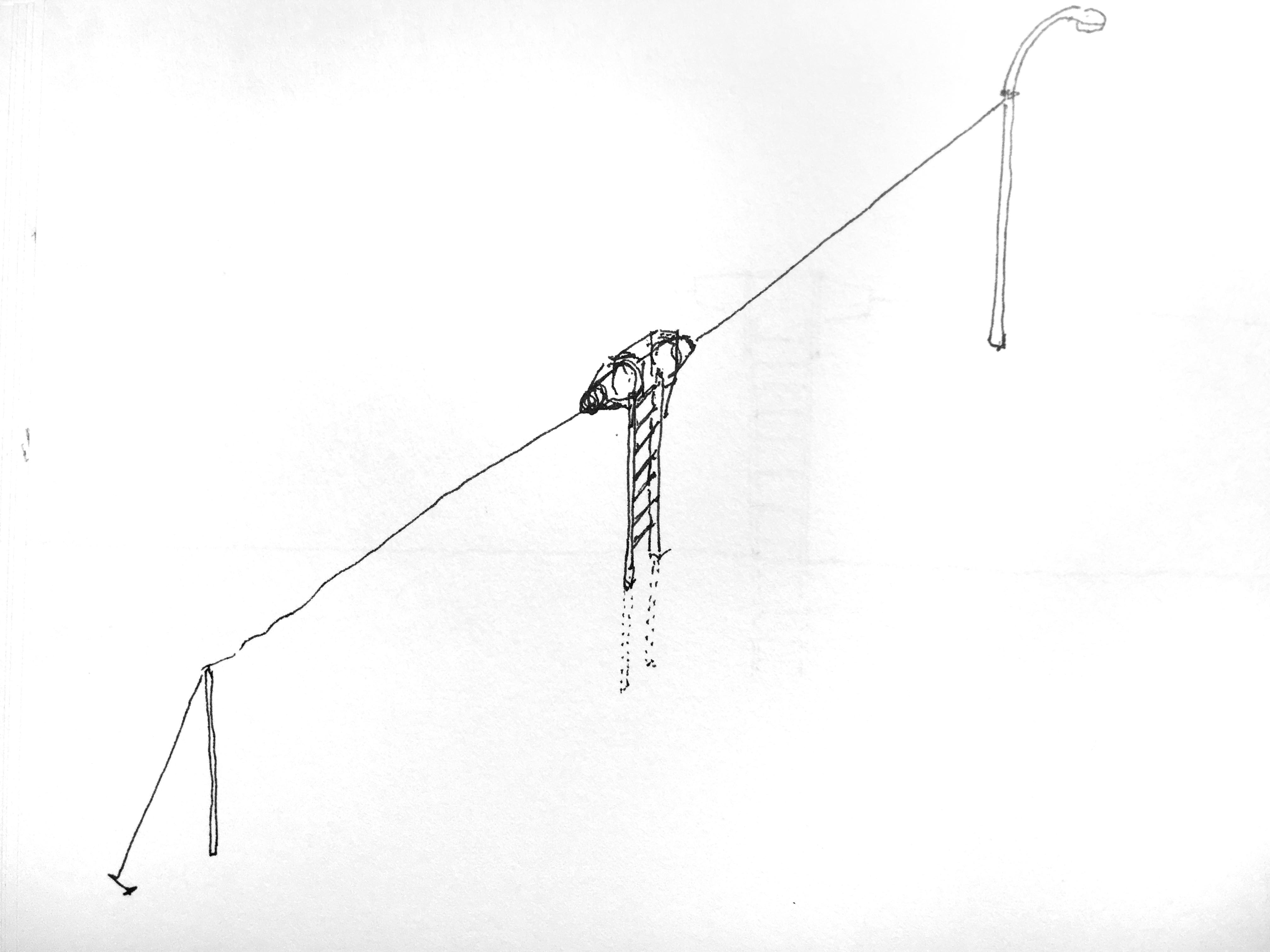

Atmospheric Listening Station Mock-Up (Horizontal Strings). June 18, 2020. Des Moines, Iowa.
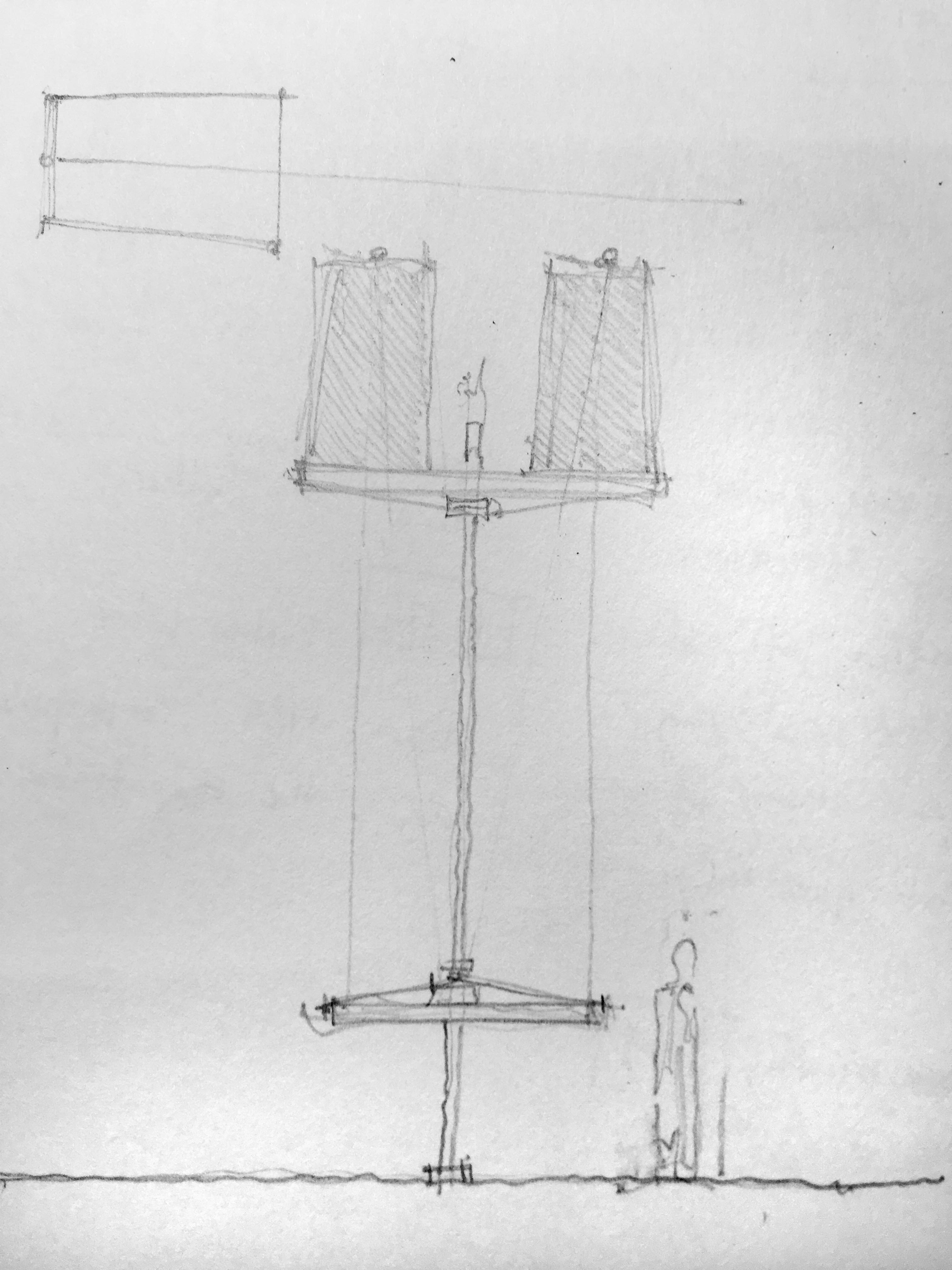

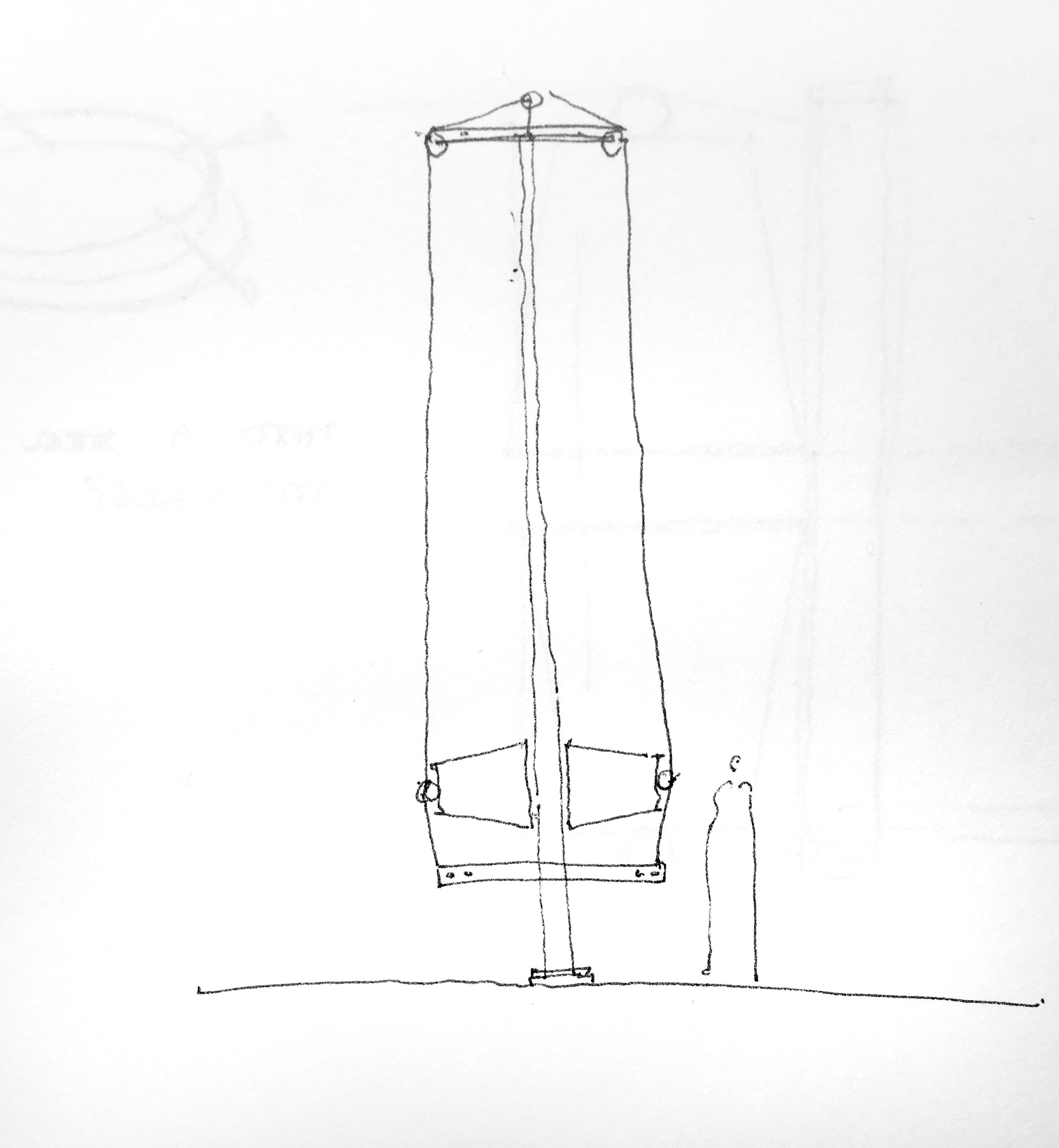
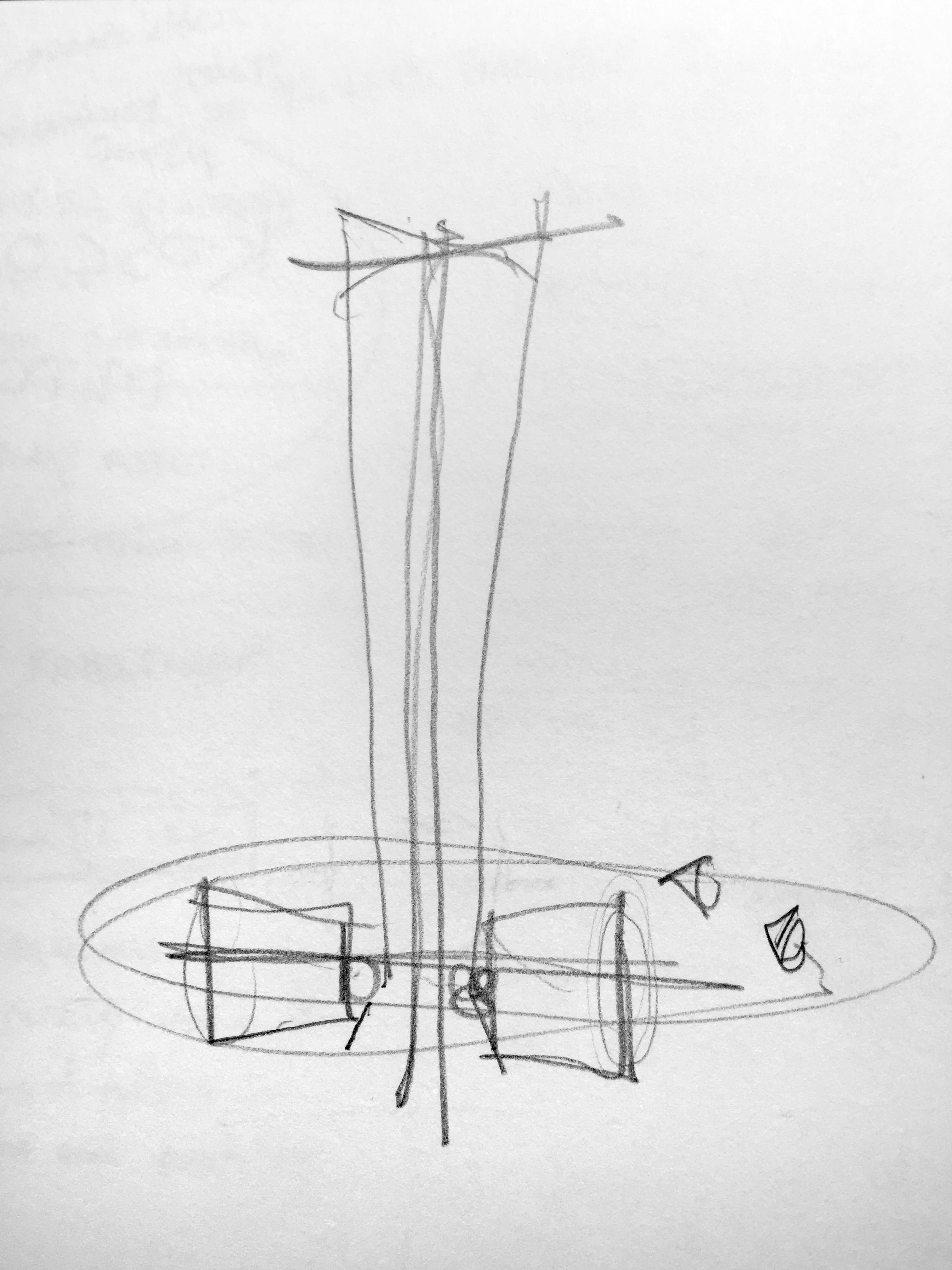
Sketches for Atmospheric Listening Station for flagpole at Stone Quarry Hill Art Park, Cazenovia, NY.

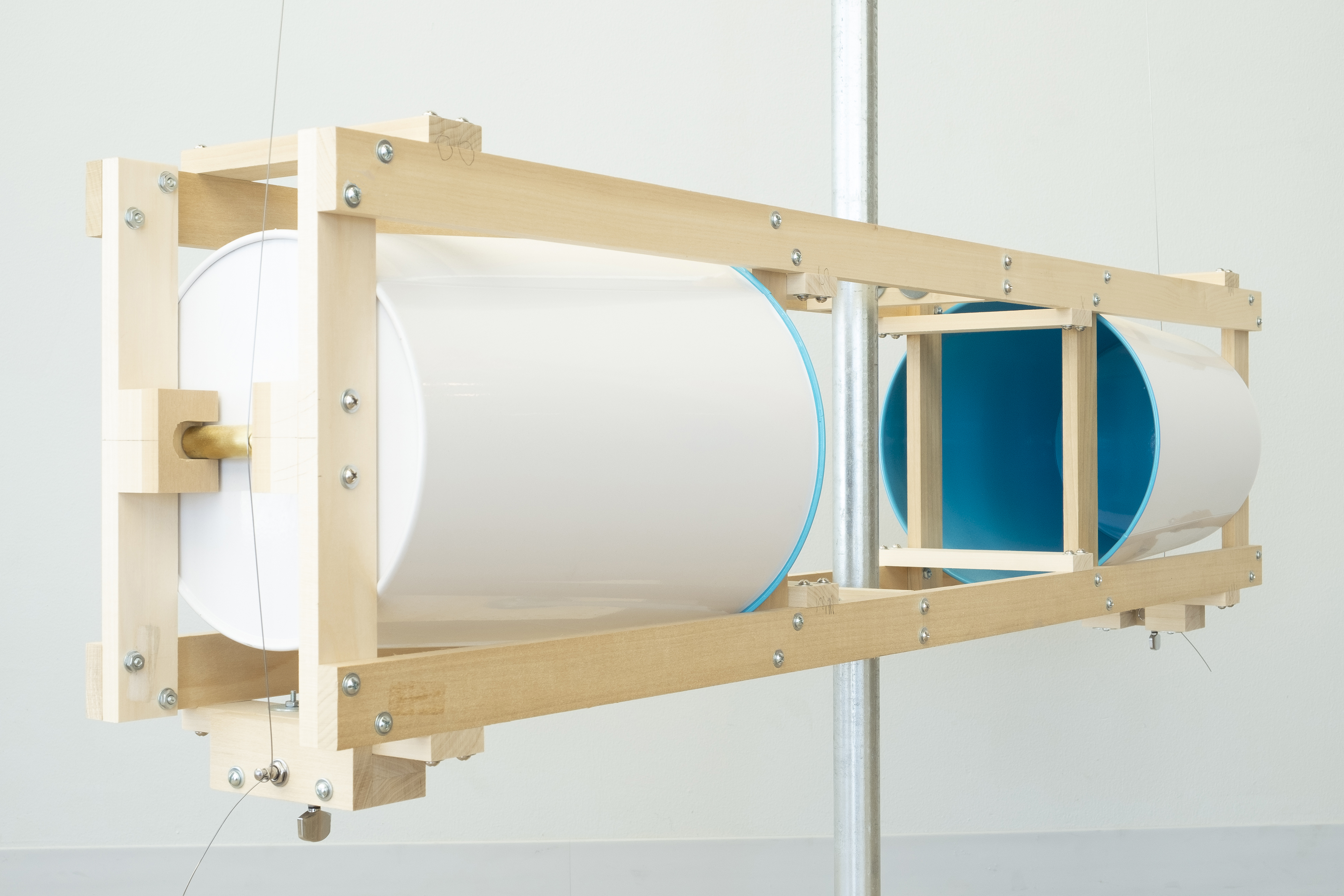
Atmospheric Listening Station Mock-Up (Single String). August, 2020. Des Moines, Iowa.






Installation sketches for Atmospheric Listening Statio at Stone Quarry Hil Art Park, Cazenovia, NY.
Atmospheric Listening Station as installed at Stone Quarry Hill Art Park, Cazenovia, NY. October, 2020. The string is continually tensioned by the weight of the frame carrying the found beverage-bin resonators.
Many thanks to the Stone Quarry Hill Sculpture Park, Sculpture Space, the Daniel J. Huberty Faculty Fellowship in Architecture and the Department of Architecture at Iowa State University for their support of these projects.

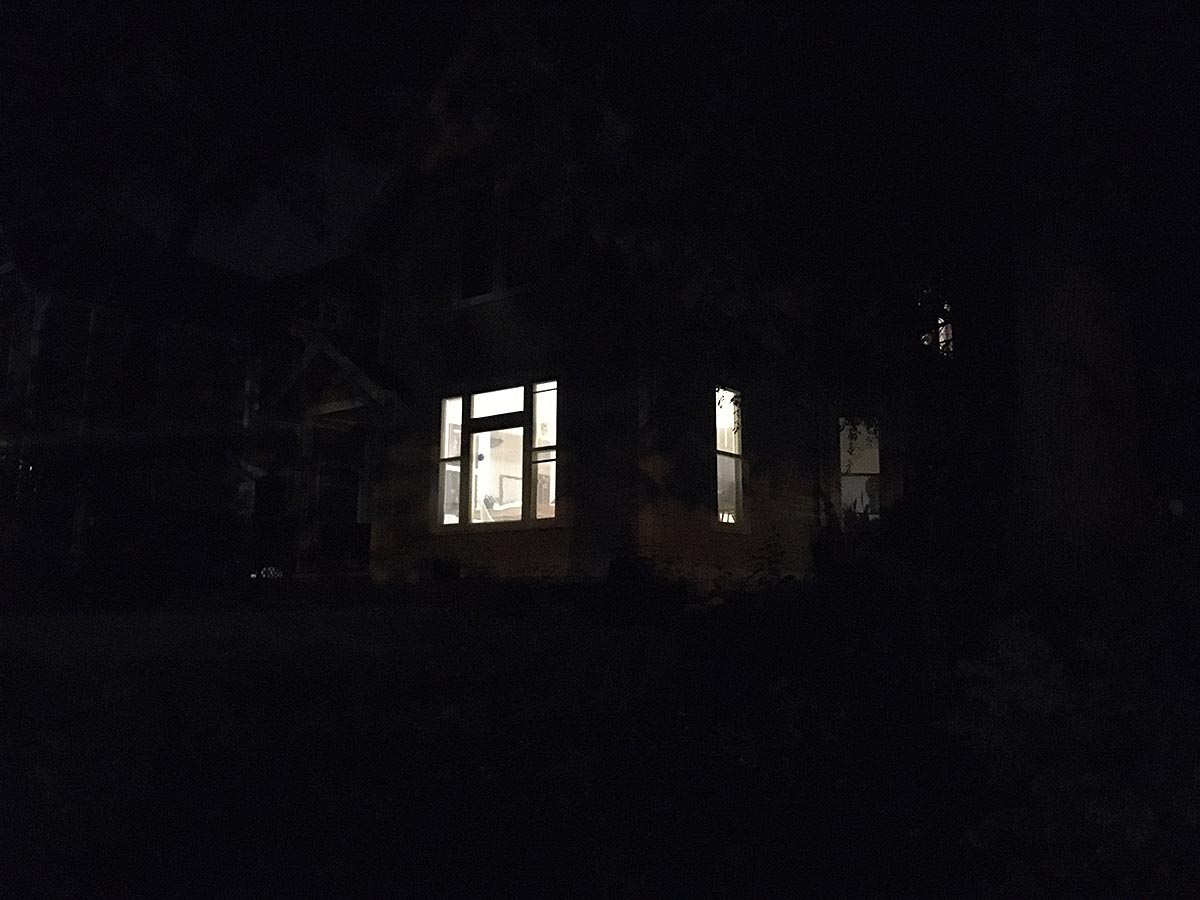
Full/Empty
As part #yardwork for Emerald City/Art Week Des Moines 2020, Olivia Valentine and I solicited images from near and far under the prompt: Full/Empty. The resulting images were projected in the windows of our Des Moines home each evening for art week as part of this socially distanced, city wide art installation. Much thanks to AJ Zandt, Christopher Chiavetta, Commonstudio (Daniel Philips and Kim Karlsrud), David Gersten, Erkan Karakiraz, Eric Mercer + Katie Waugh, Leah Kalmanson, Lenore Metrick-Chen, Sayward Schoonmaker, and Şebnem Yücel for their contributions to this project!
